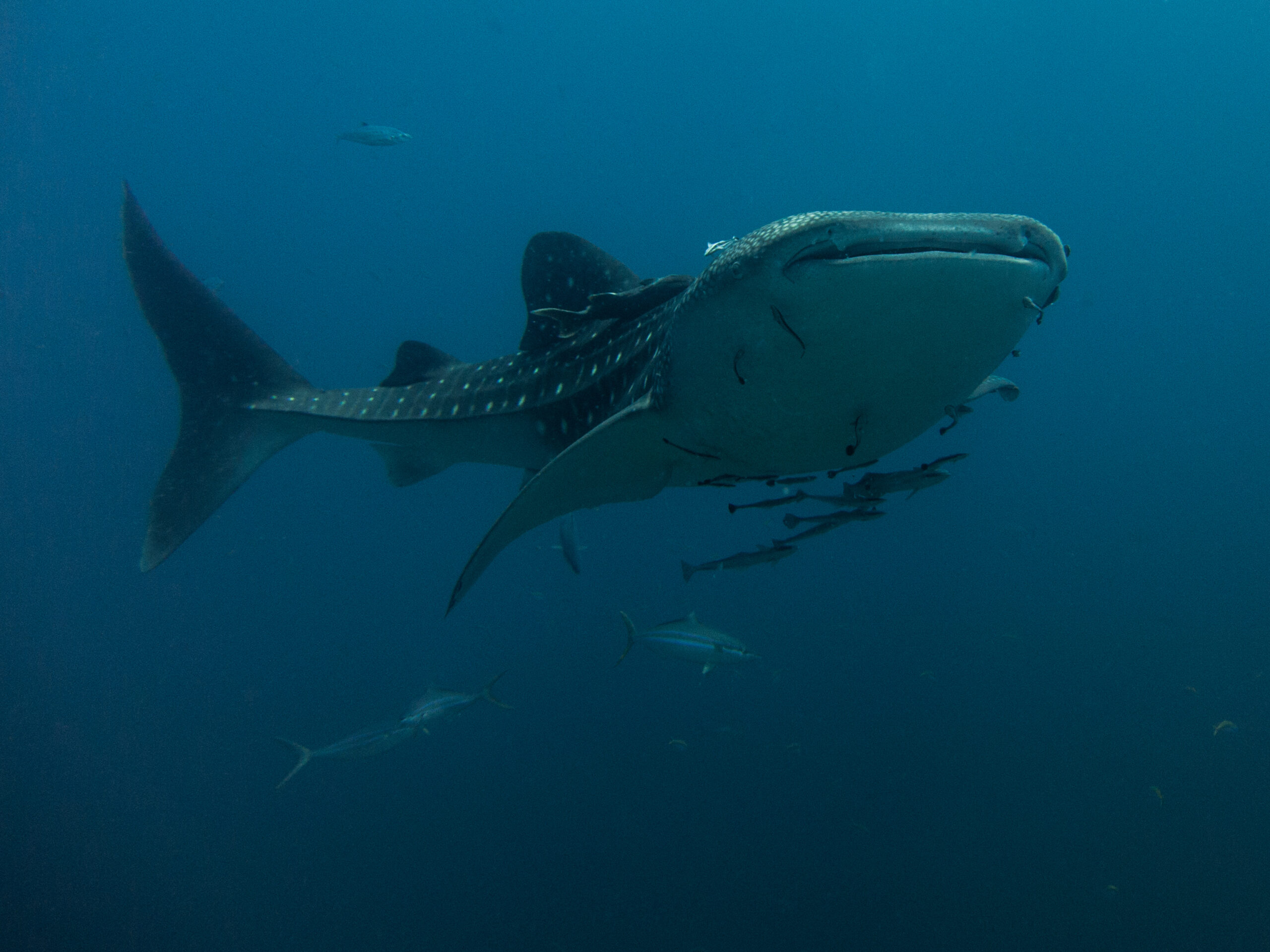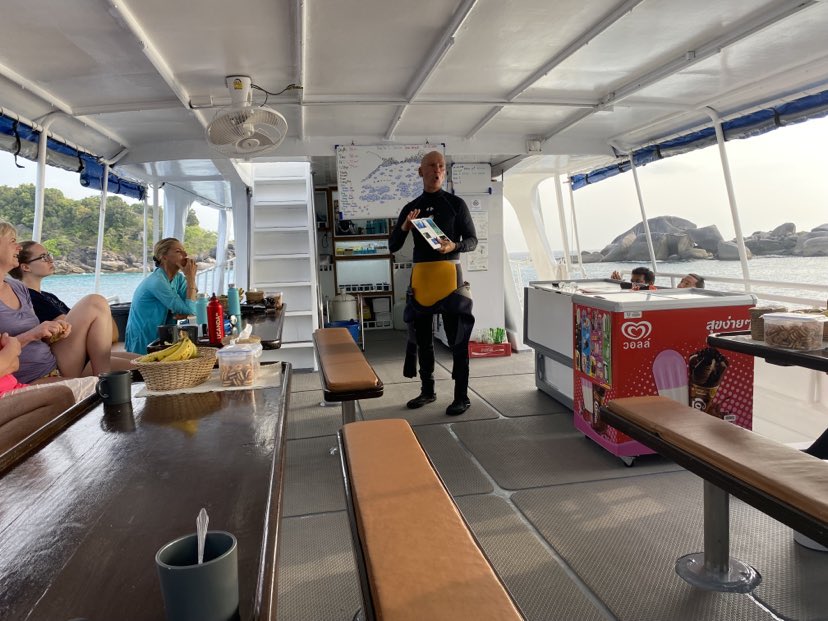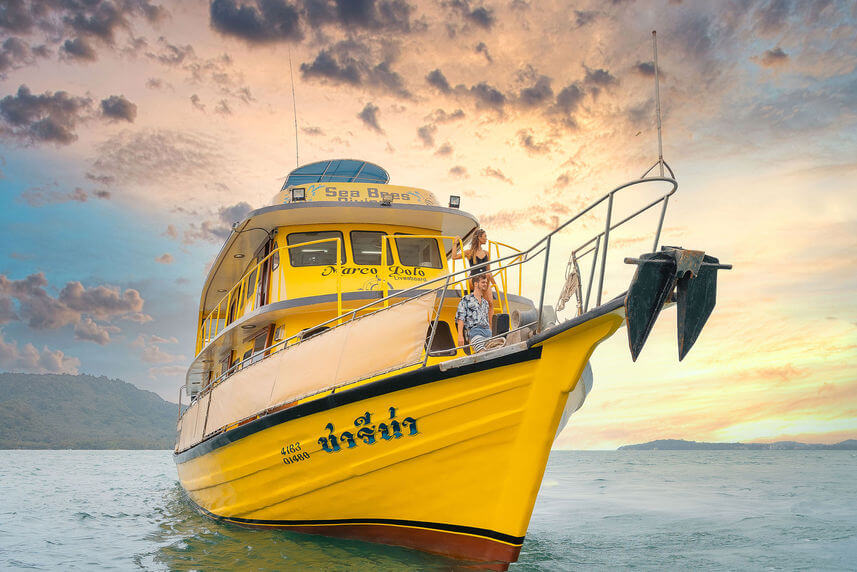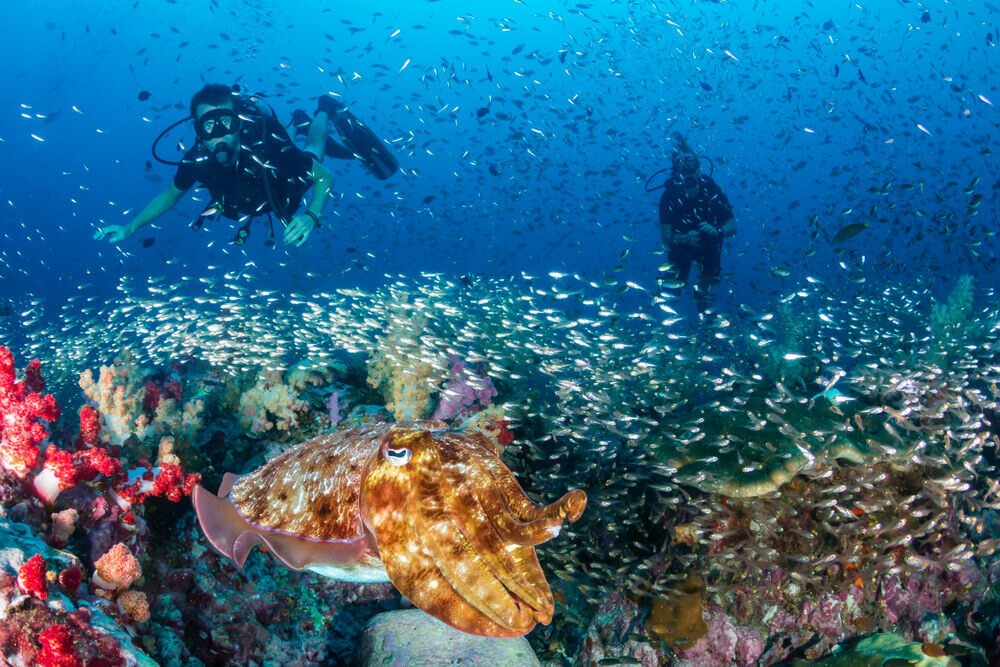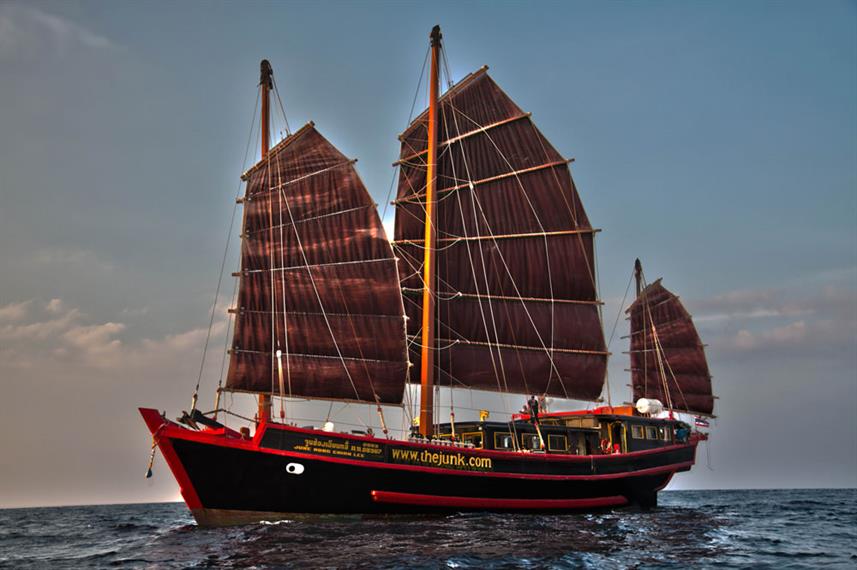
Thailand is the cheapest, easiest-to-reach and most beginner-friendly place in all of Southeast Asia to go on a liveaboard!
Thai liveaboards explore the Andaman Sea which is located to the west side of Thailand.
The most popular route is around North Andaman: it is here one can dive the legendary Similan and Surin Islands as well as Richelieu Rock: together, these places are home to the best diving in the country!
These waters are also home to a myriad of other marine life including all manner of fish and critters as well as turtles, sharks and rays.
Divers will see superb coral reef over a varied and dramatic underwater landscape of many boulders, arches, caverns and swim throughs whilst marvelling at incredibly healthy coral reefs.
But in order to go on a Thai liveaboard and witness all of this for yourself, first you have to choose one!
There are dozens of Thailand liveaboards and they all vary a lot in terms of cost, itinerary and the actual liveaboards themselves – such as how big they are, what kind of cabins are available, extra activities available and so on.
Now; if you’re looking for firsthand advice on what what to expect when going on a Thai liveaboard; I’m your guy!
I’ve dived all around Thailand’s Andaman Sea (both north and south). I last went on a Thai liveaboard to the Similan Islands and Richelieu Rock in April 2023 – it was awesome!
Read on and I’ll tell you my TOP PICK Thailand liveaboard as well as 11 other runner’s up; covering a wide spectrum of prices, itineraries and extras.
I’ll also tell you what to expect and pack when going on a Thai liveaboard, the different itinerary options, when to go and more – so let’s do this!
REVIEWS of Best Thai Liveaboards:
1) Similan Explorer (TOP PICK!)
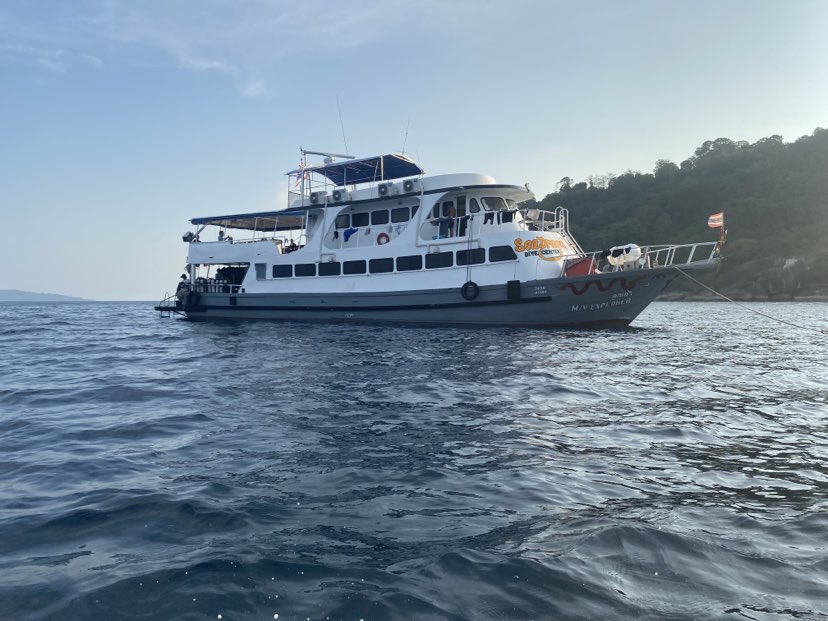
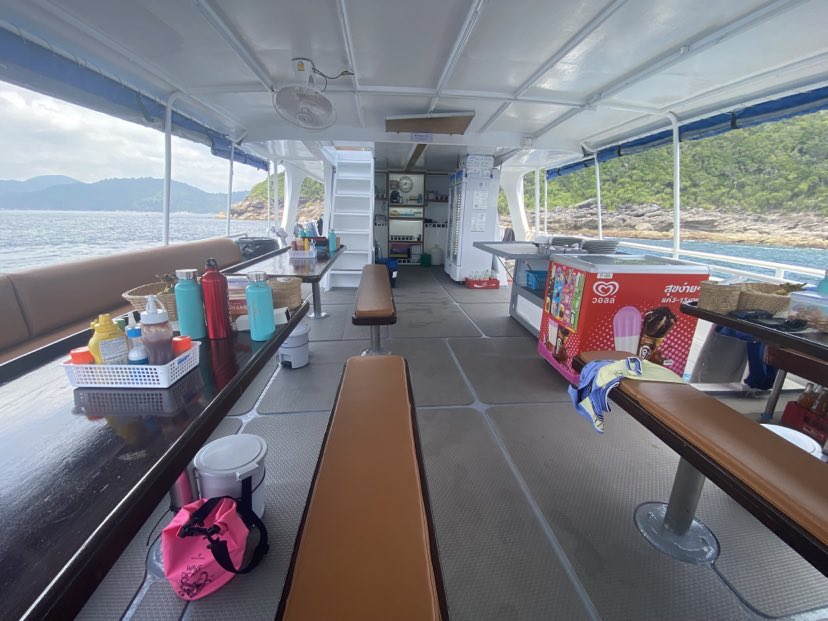
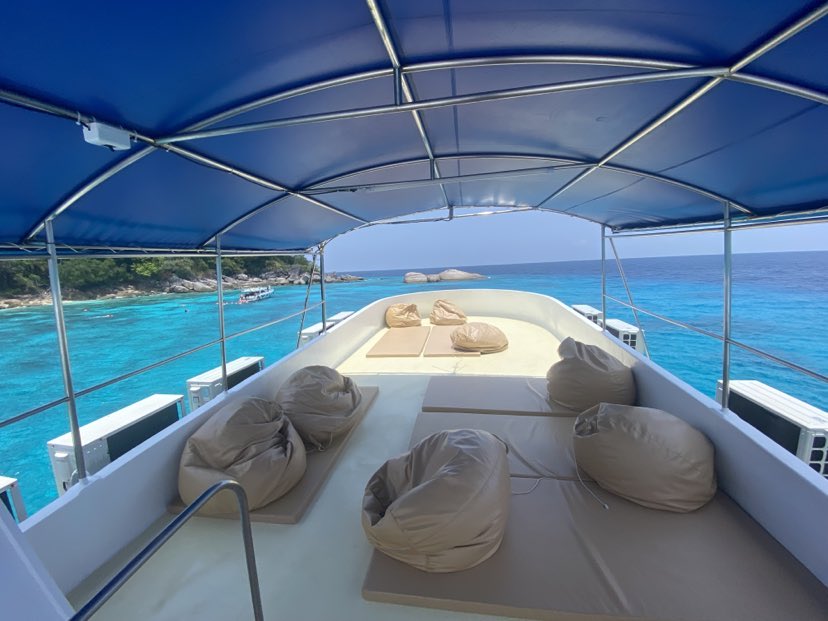
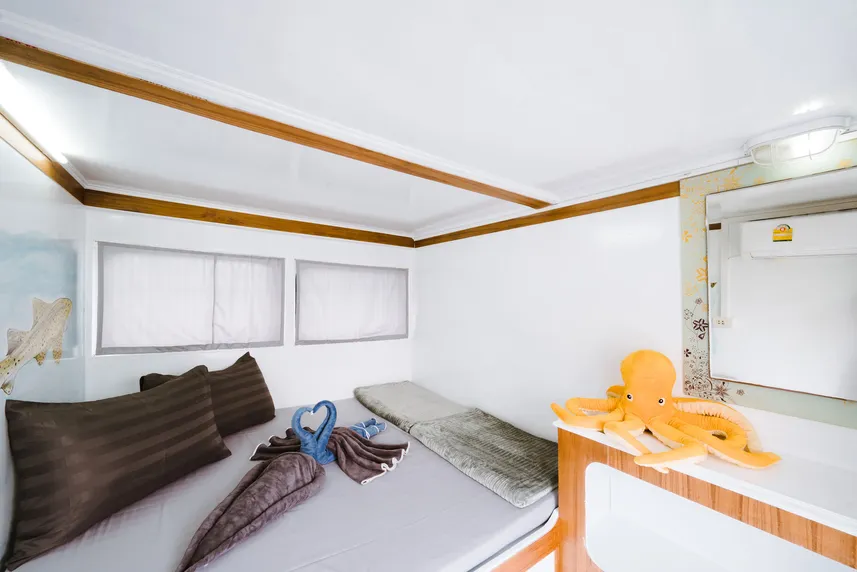
The Similan Explorer liveaboard is the cheapest Thai liveaboards out there – but don’t let that fool you! This is a superb liveaboard that offers insanley awesome value for money. I had an absolute ball diving the Similan and Surin Islands as well as the legendary Richelieu Rock with these guys.
All the crew and staff extremely professional, competent and friendly and the overall structure of the trip was perfect.
Renovated in 2024, the Similan Explorer is extremely modern, clean and comfortable with incredible food and bright, spacious cabins.
It is also beginner friendly with the option to complete dive courses throughout the trip. There’s a wide range of itineraries to choose from, ranging in length from 3 – 13 nights.
Most of these trips explore the legendary North Andaman Sea around the Similan + Surin Islands + Richelieu Rock – which together comprise the very best diving in Thailand. A few trips are also availble to the South Andaman (Phuket + Phi Phi area).
I went on a 5 night trip to the North Andaman with Similan Explorer in April 2023 and had an incredible time. I’ll definitely be back to dive with them again!!
2) Thailand Aggressor
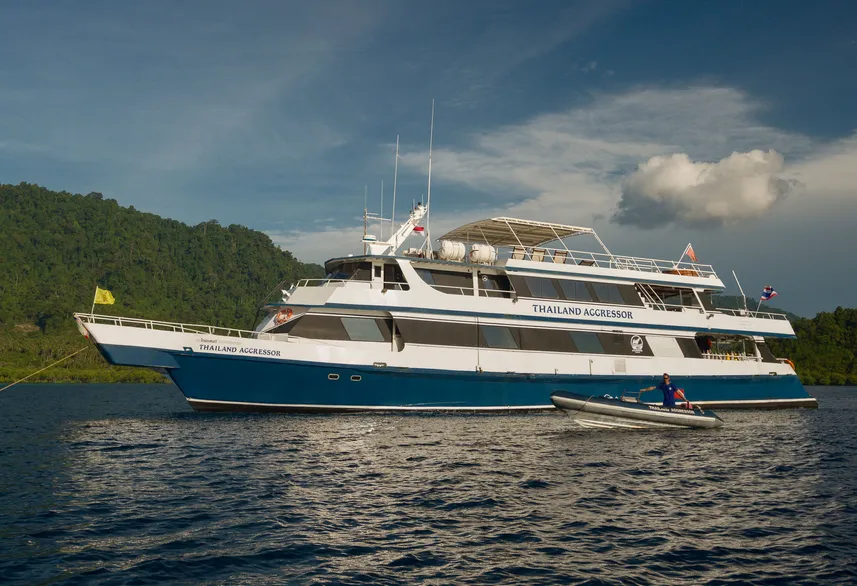
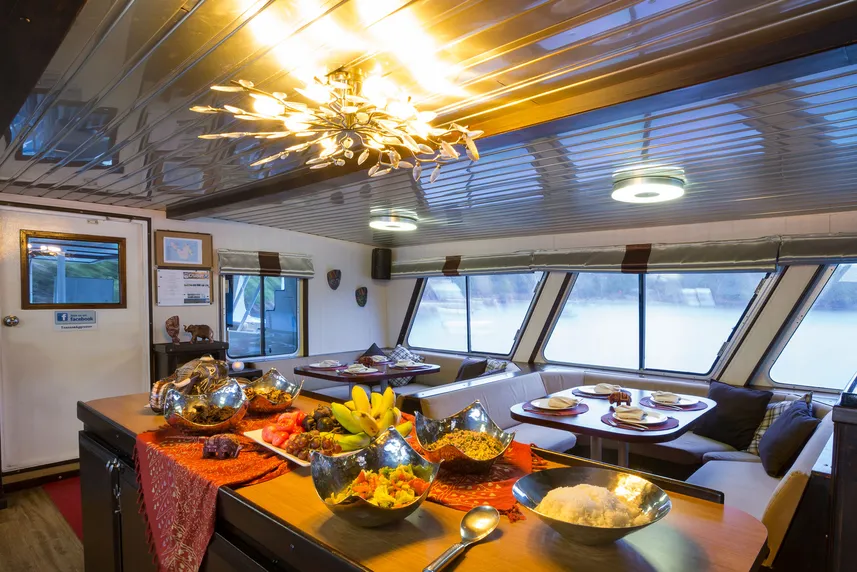
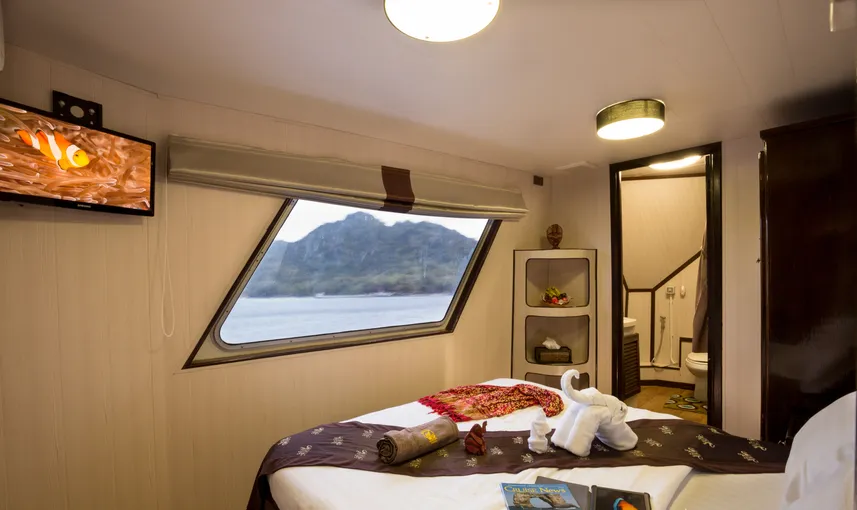
The Thailand Aggressor is one of the largest and most luxurious liveaboards to explore Thailand’s North Andaman Sea around the legendary Similan and Surin Islands as well as Richelieu Rock. Thailand Aggressor also offers great value for money with up to 5 dives a day!
3) Pawara
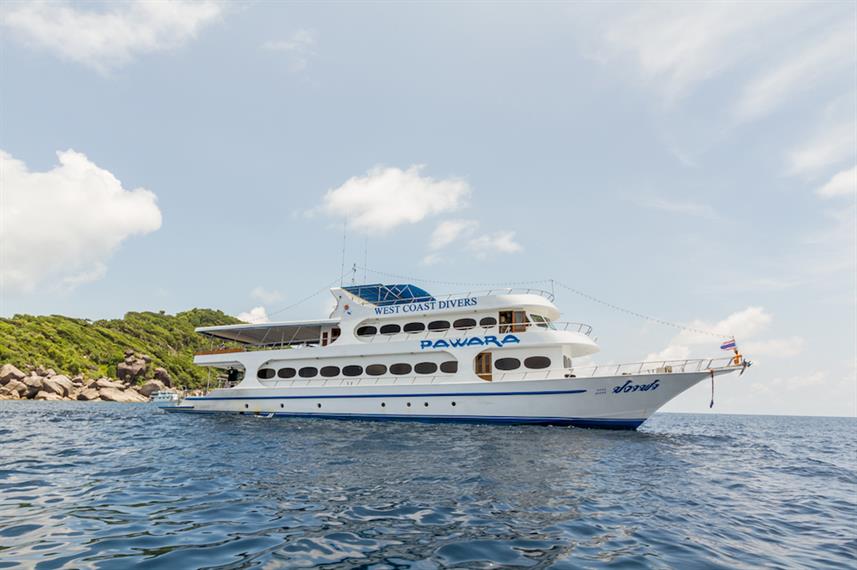
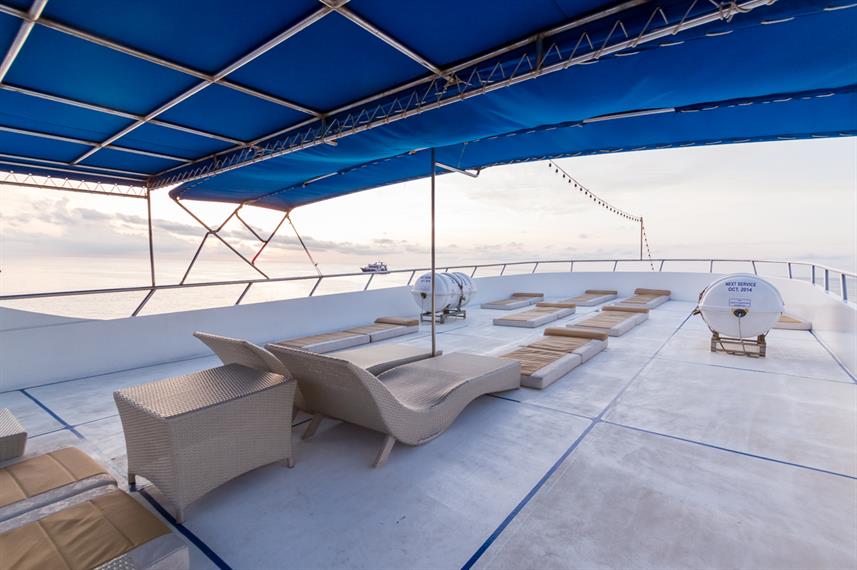
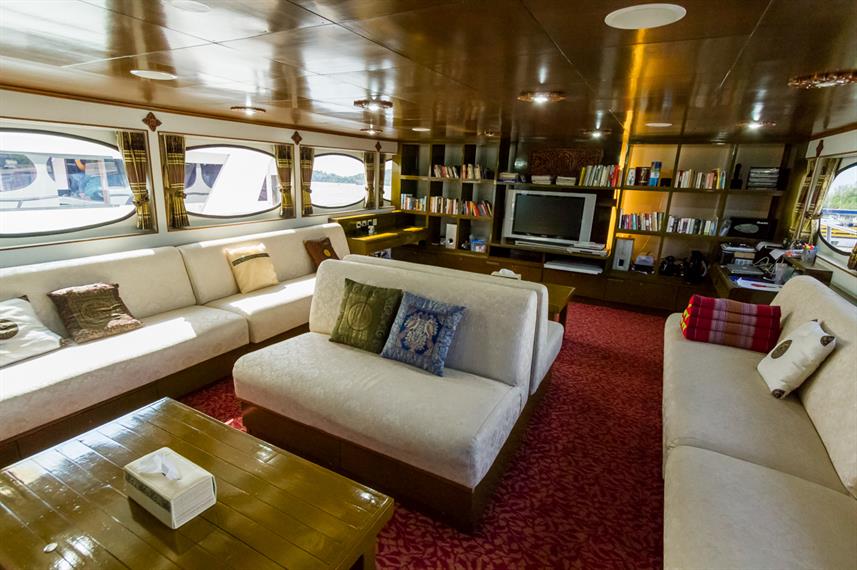
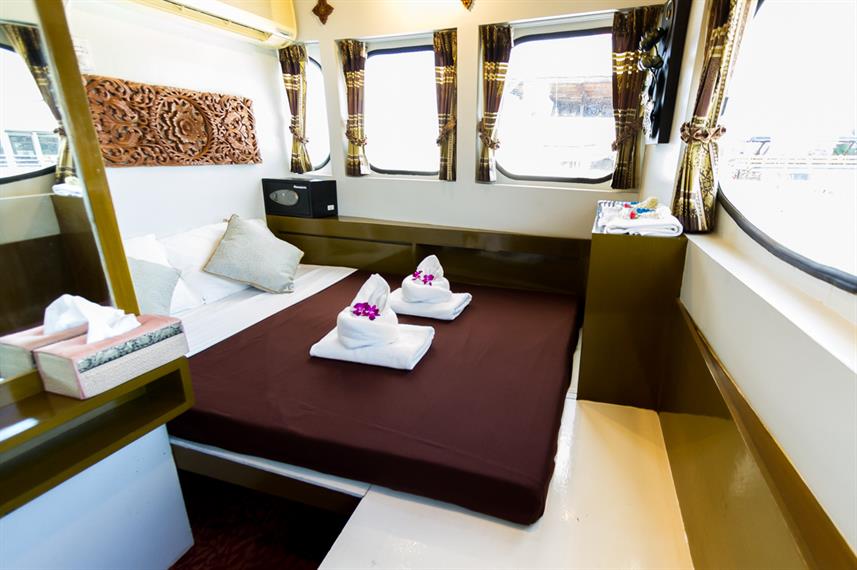
Pawara offers FREE NITROX to certified divers! 4 Night trips make this a perfection option for anyone on a tight time schedule. Explores North Andaman (Similan Islands + Richelieu Rock).
4) The Junk

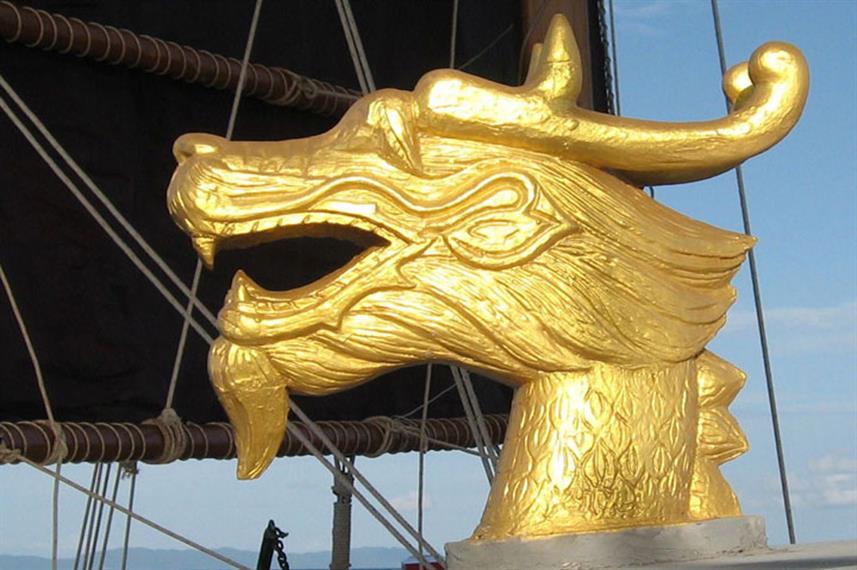
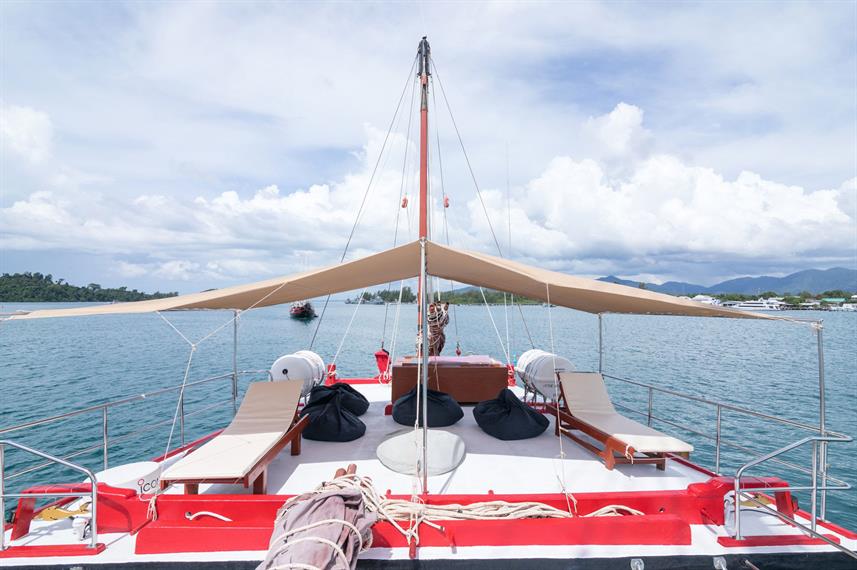

The Junk is so old-school looking that it’s been used in several movies (including a 007 film!). It also has free kayaks. Offers 4 – 6 Night trips around North Andaman (Similan + Surin Islands + Richelieu Rock). Alternately, 3 – 4 night trips to South Andaman (Phuket, Phi Phi etc) are also available.
5) Smiling Seahorse
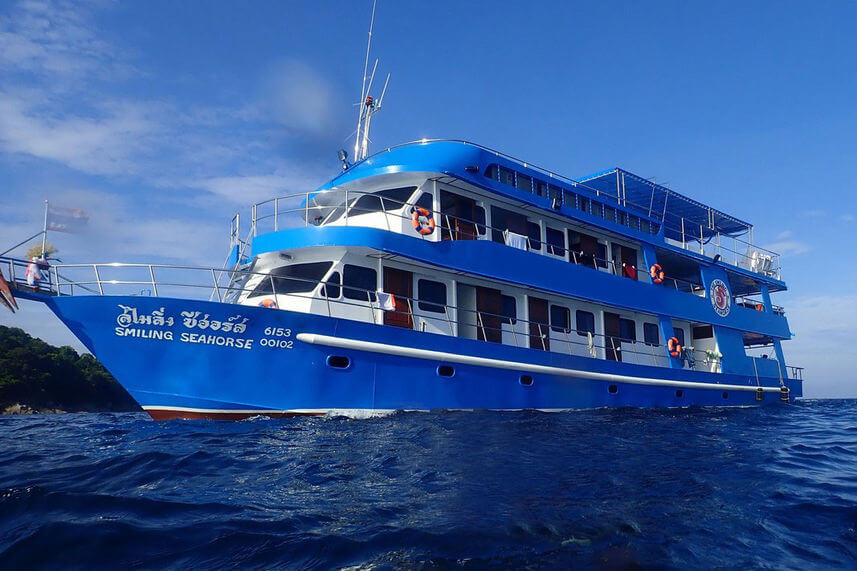
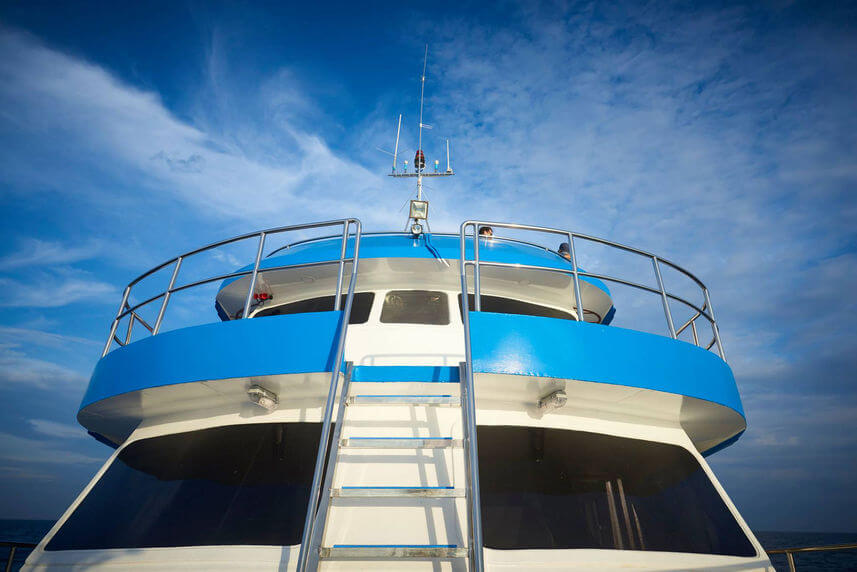
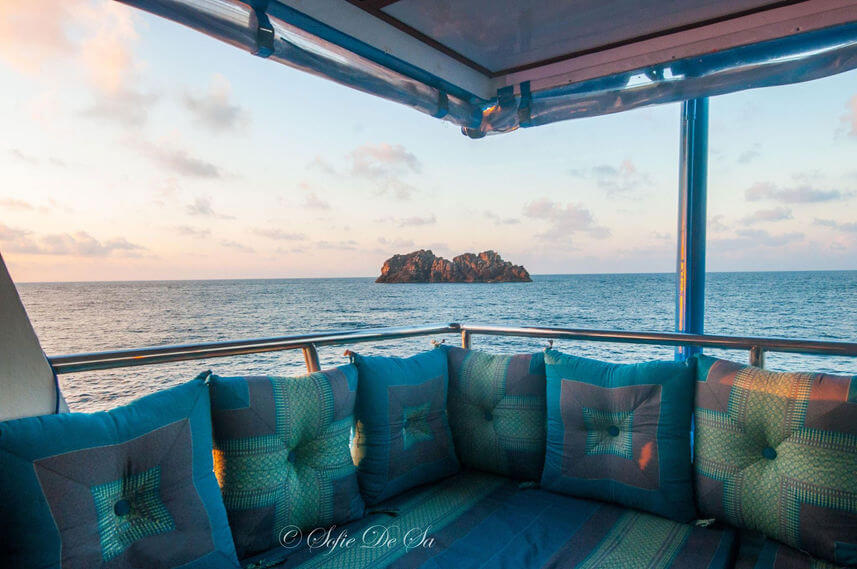
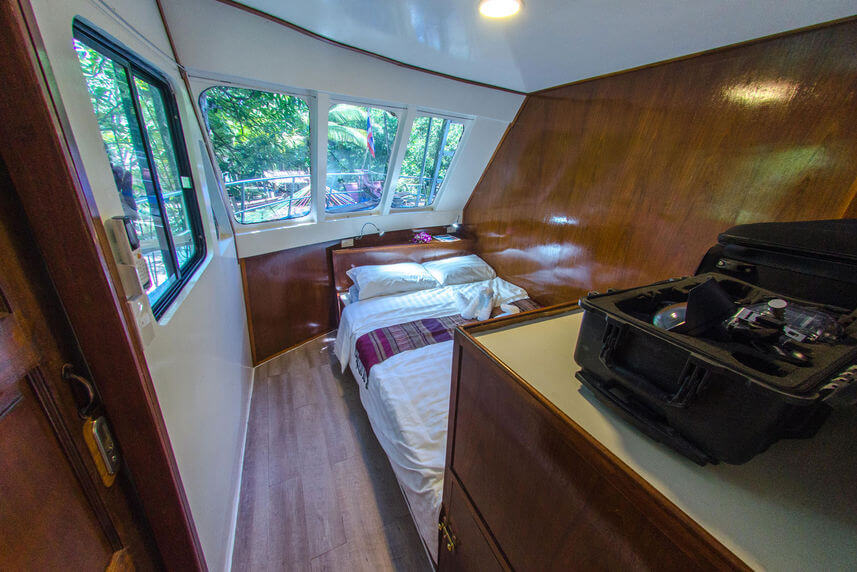
Smiling Seahorse is unique for being one of the only Thai liveaboards to operate longer (8 night) trips that feature both the North and South Andaman Sea! There are numerous other itineraries available, some with special themes such as Shark Expeditions.
6) Sawasdee Fasai
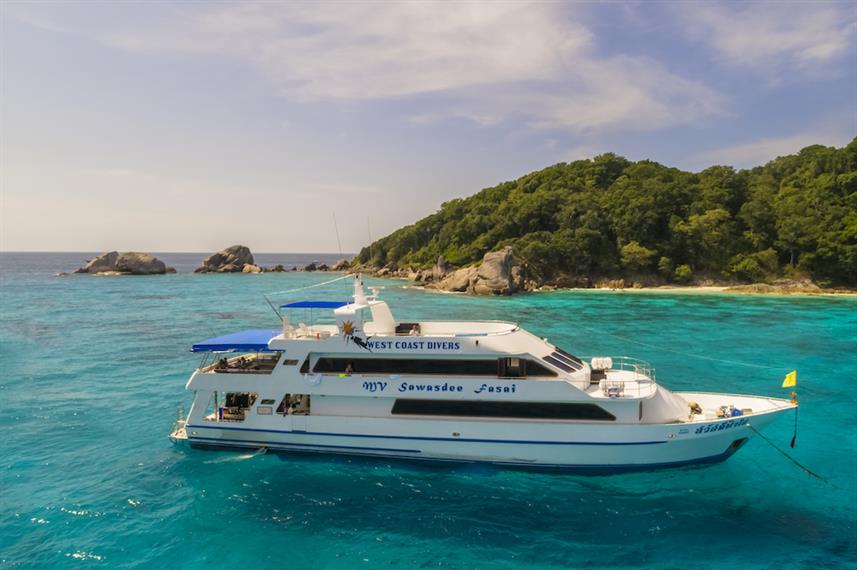
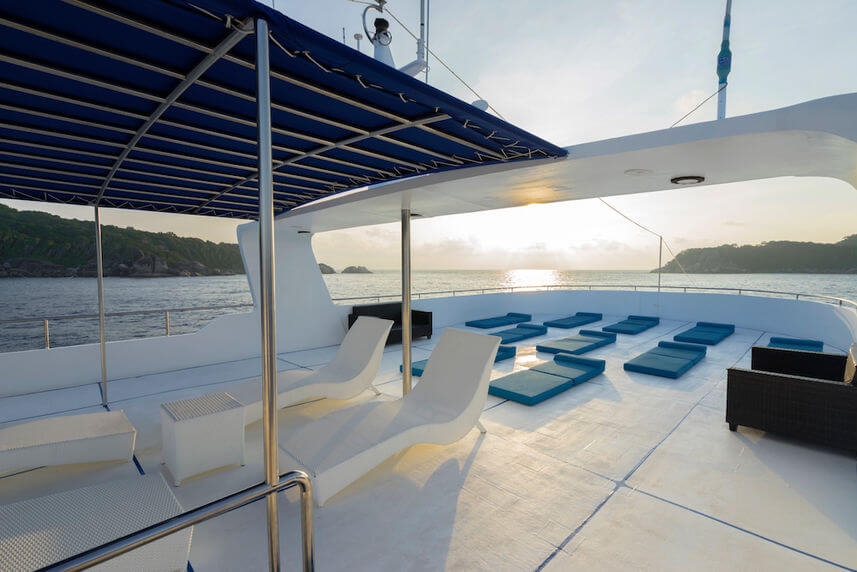
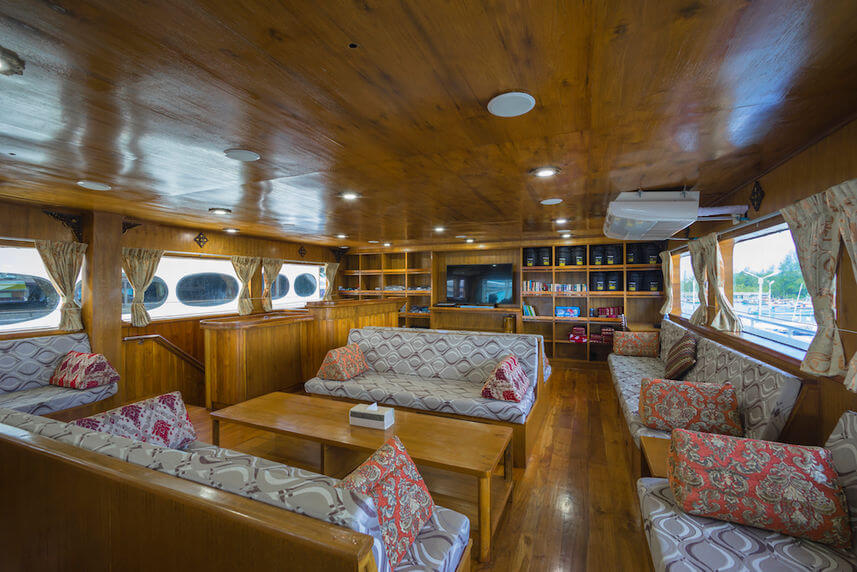
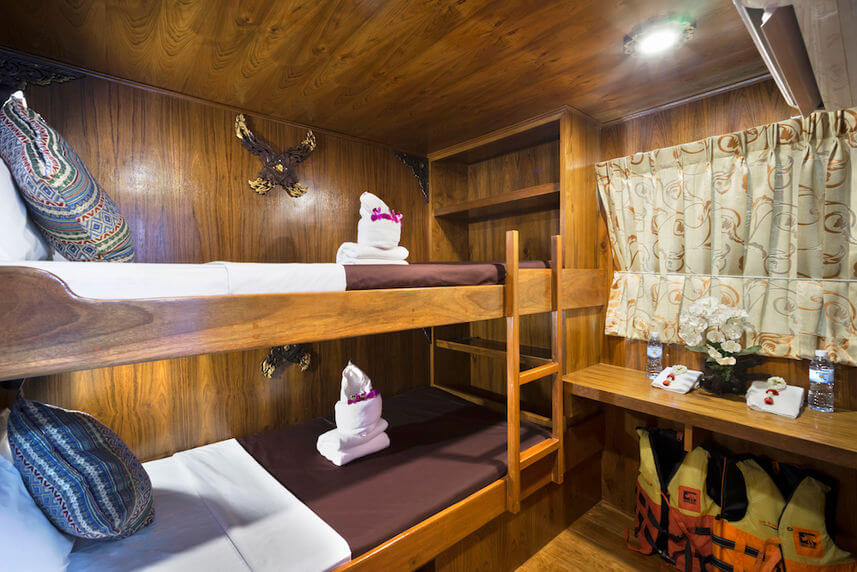
Sawasdee Fasai offers FREE NITROX for certified divers. This liveaboard is extra beginner friendly as Open Water Divers with just 5 dives can go on trips and can complete Advanced Open Water on the trip. Operates 4 Night Trips to North Andaman (Similan + Surin Islands + Richelieu).
7) Bavaria
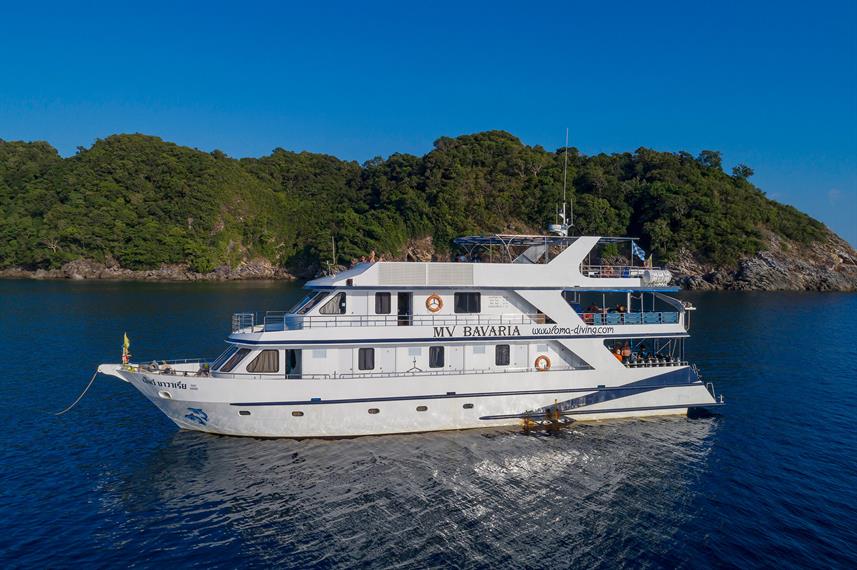
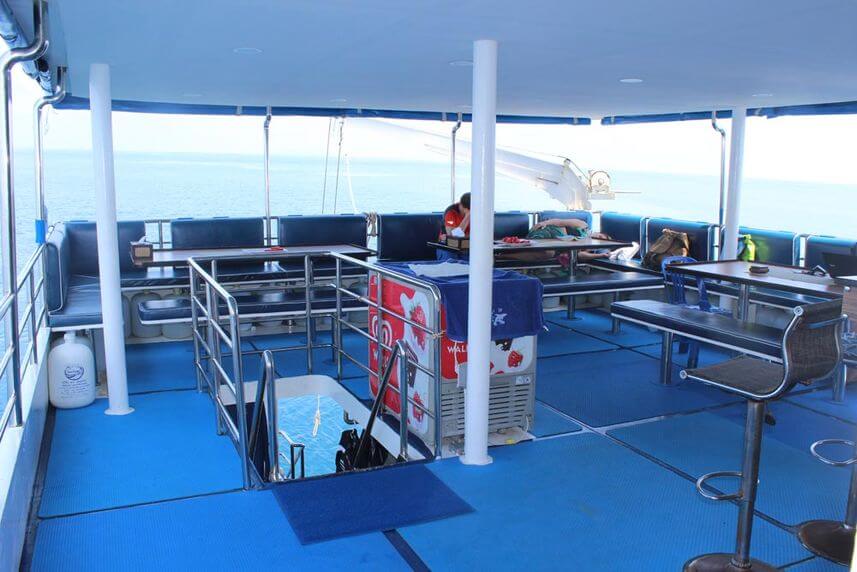
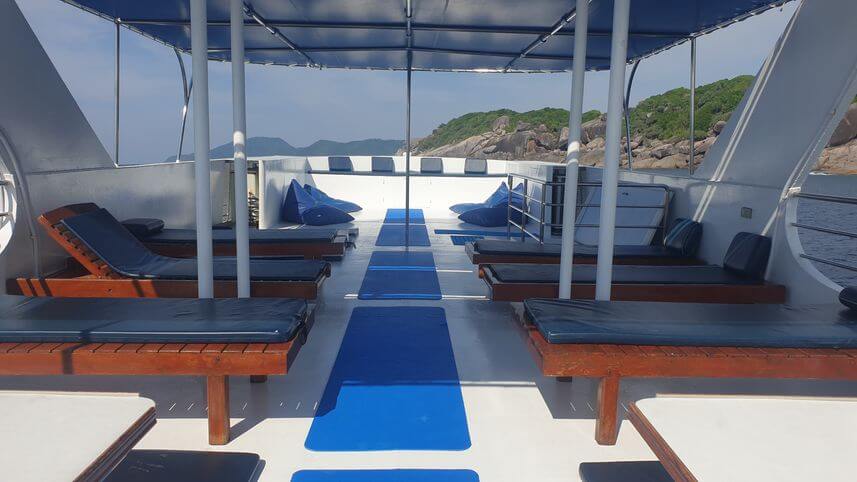
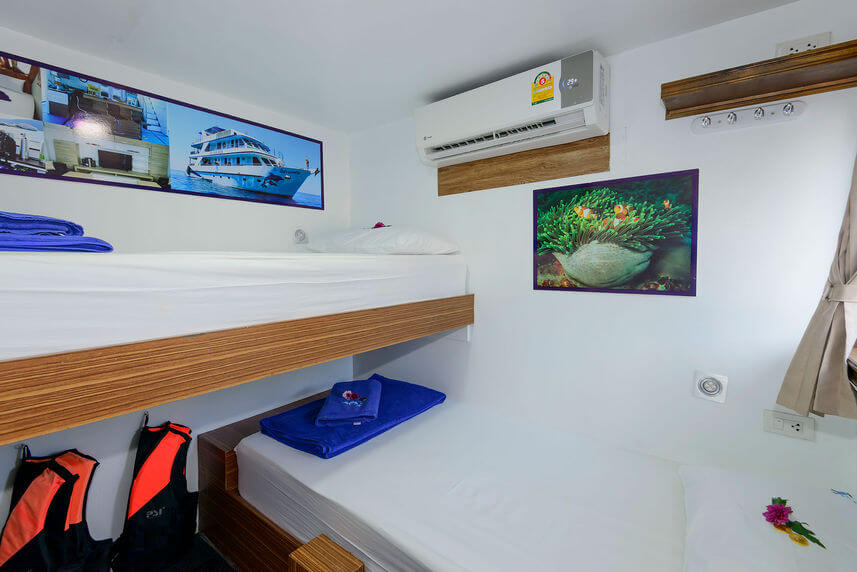
Bavaria offers many extras including massages, dive courses and a Beach BBQ. Thare are a variety of routes to the North Andaman to choose from, ranging in length from 3 – 6 nights.
8) Deep Andaman Queen
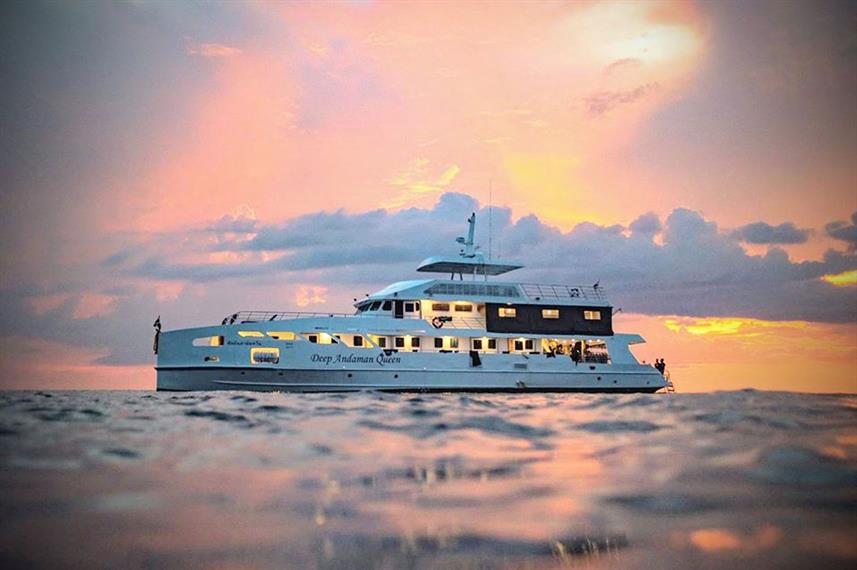
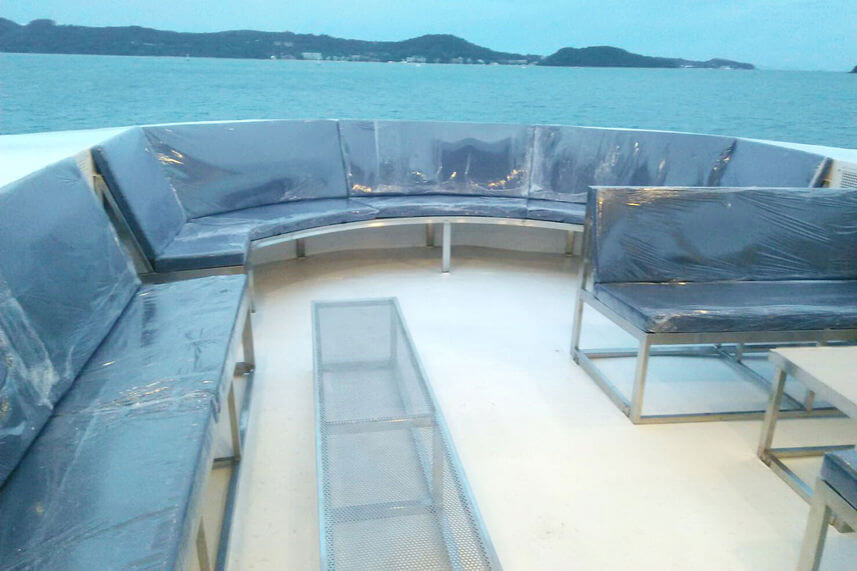
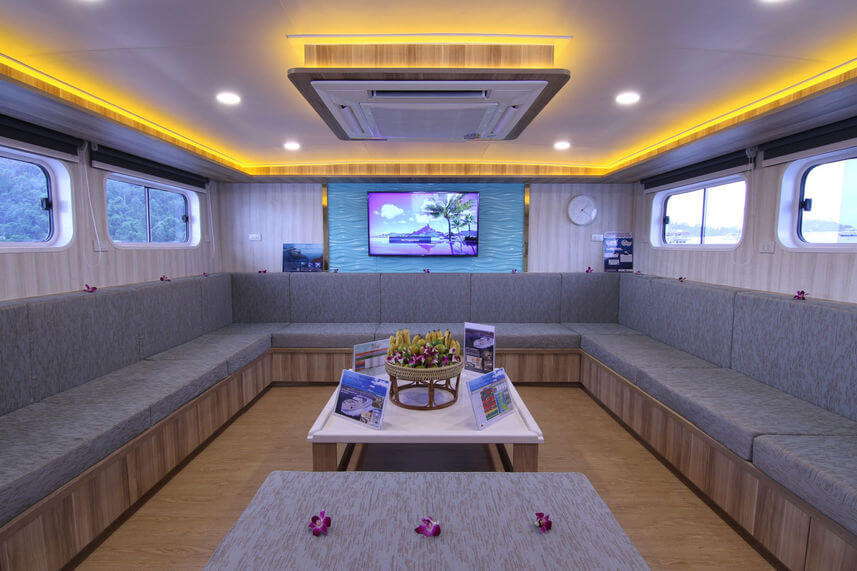
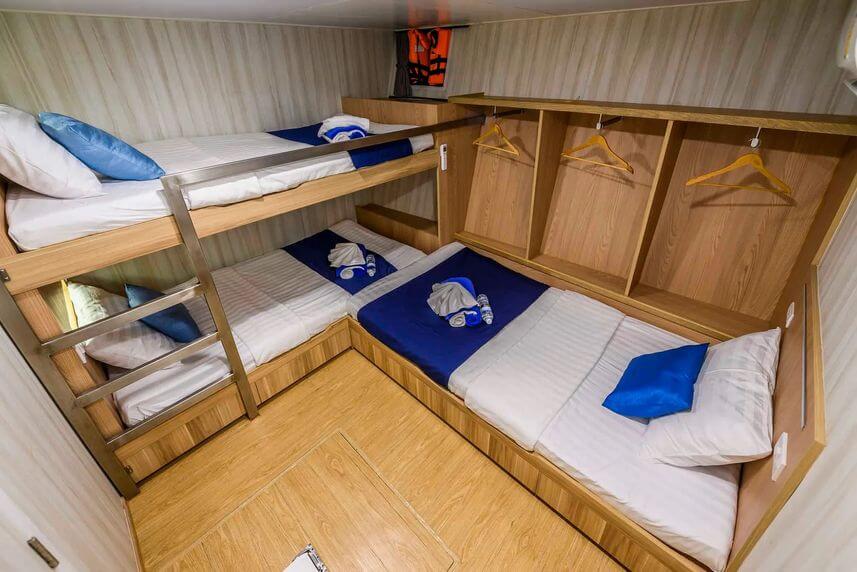
The newly renovated Deep Andaman Queen can take up to 25 guests and has spacious cabins and chill out zones. One of the crew is a naturalist guide and there is also Free WiFi. There are many itineraries available including epic 9 Night Trips that explore both the North and South Andaman Sea!
9) Phinisi
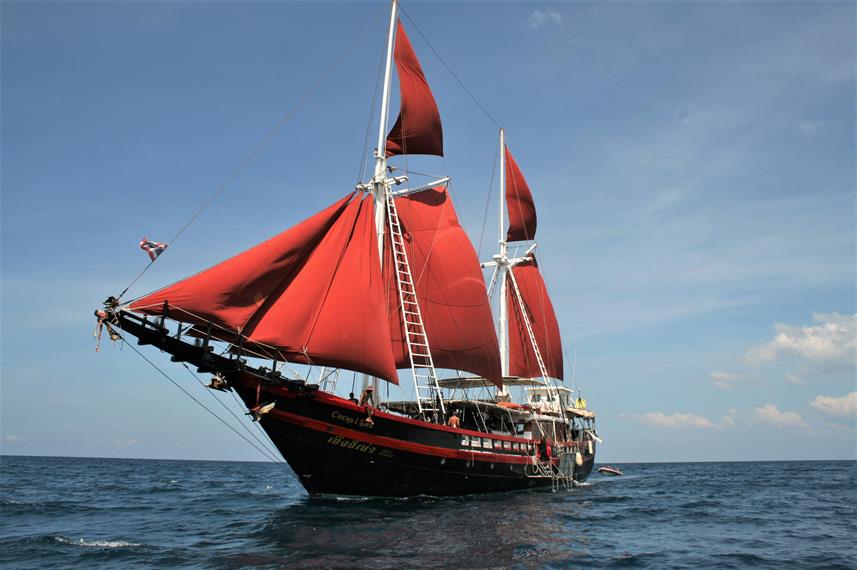
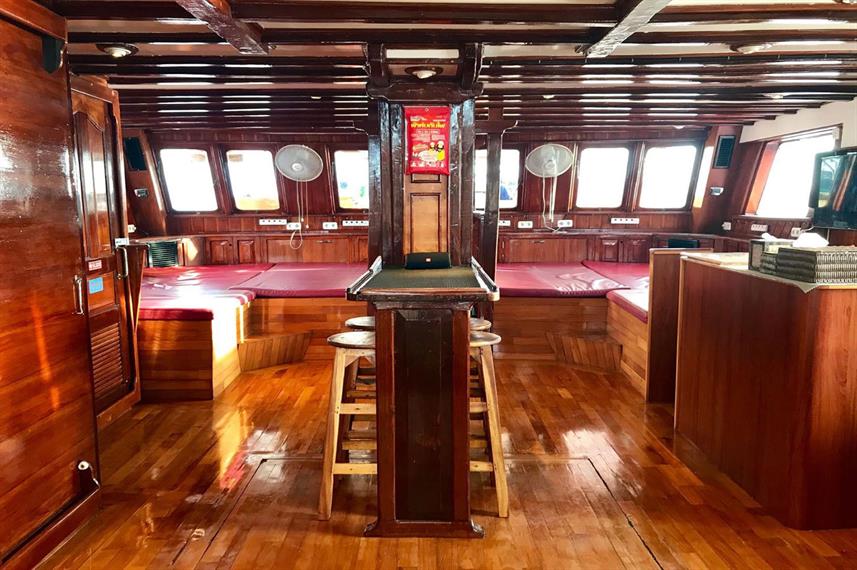
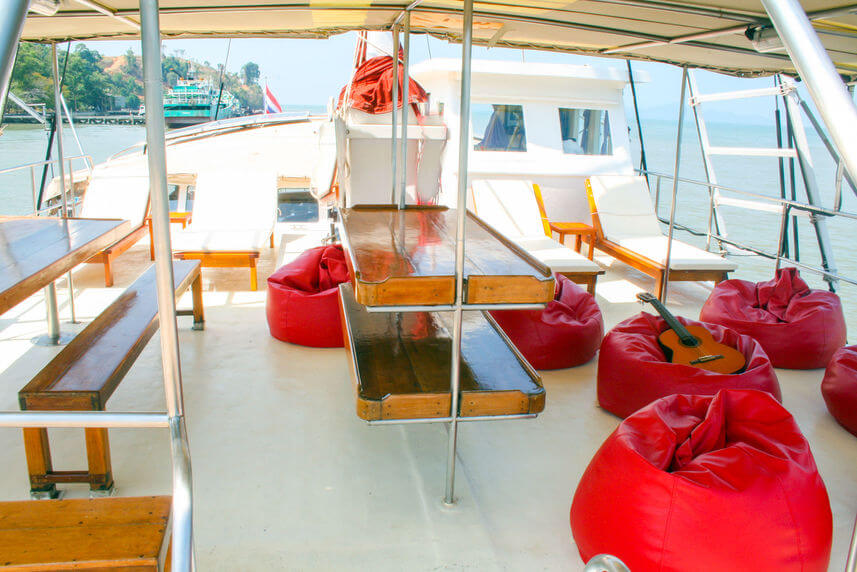
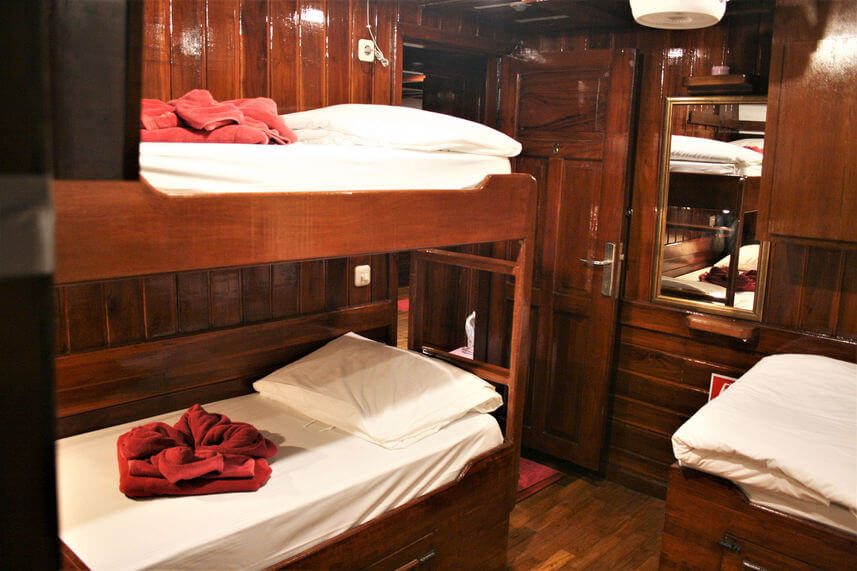
Phinisi is one of the other few Thai liveaboard to offer trips that explore the North and South Andaman Sea – these itineraries are epic and last 10 nights! There are also shorter trips available that explore just North Andaman over 4 nights.
10) Dive Race Class E
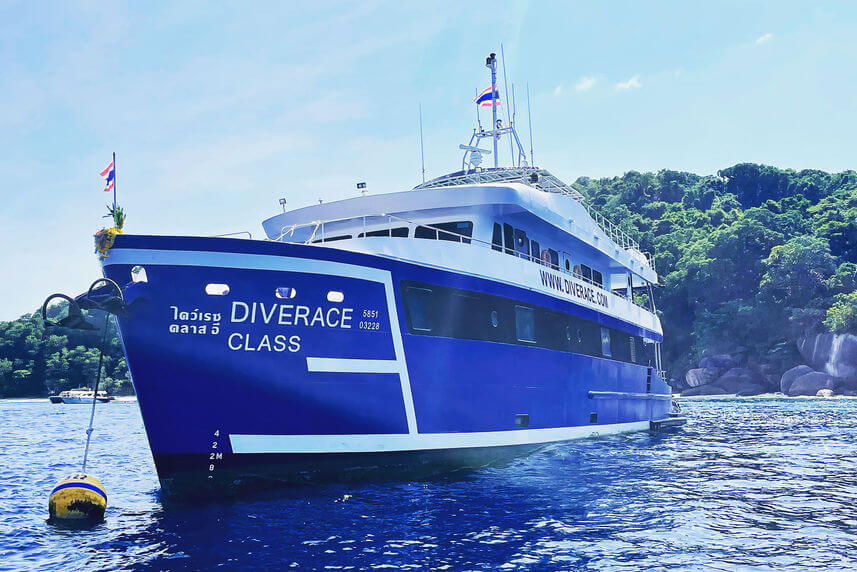
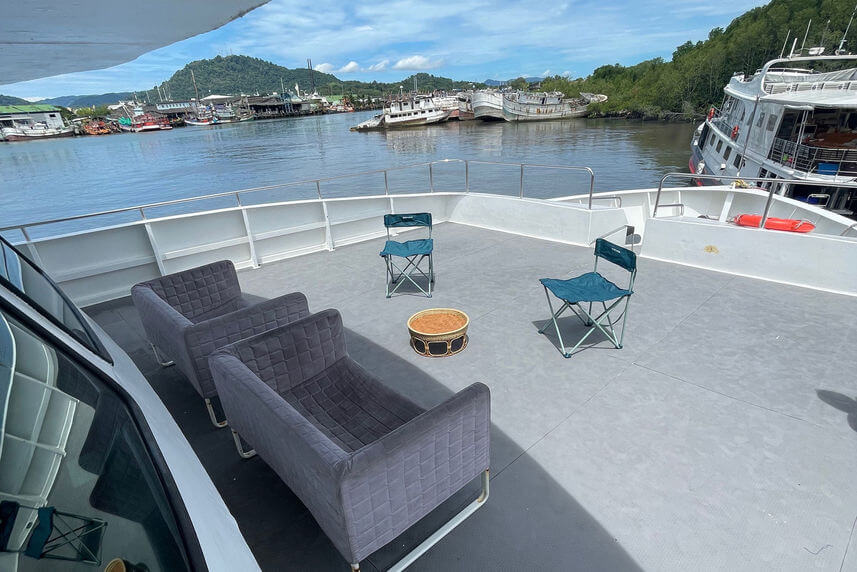
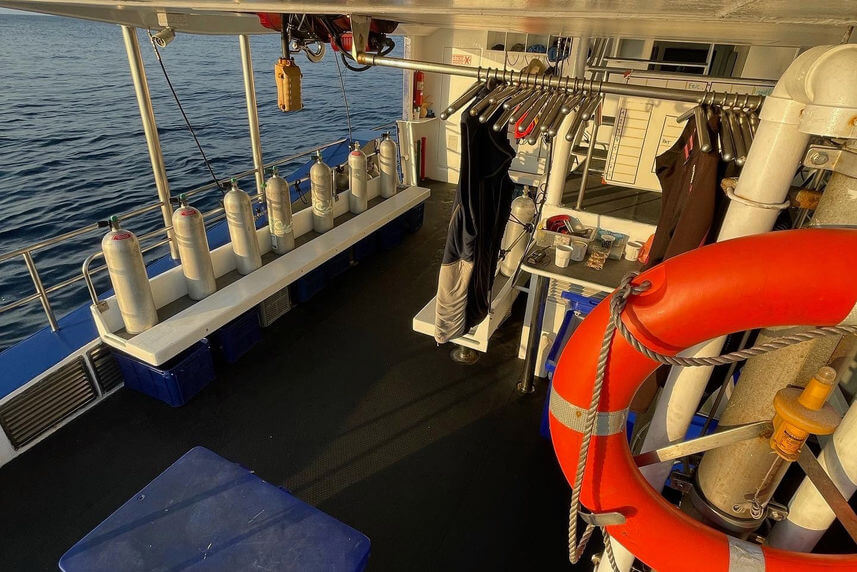
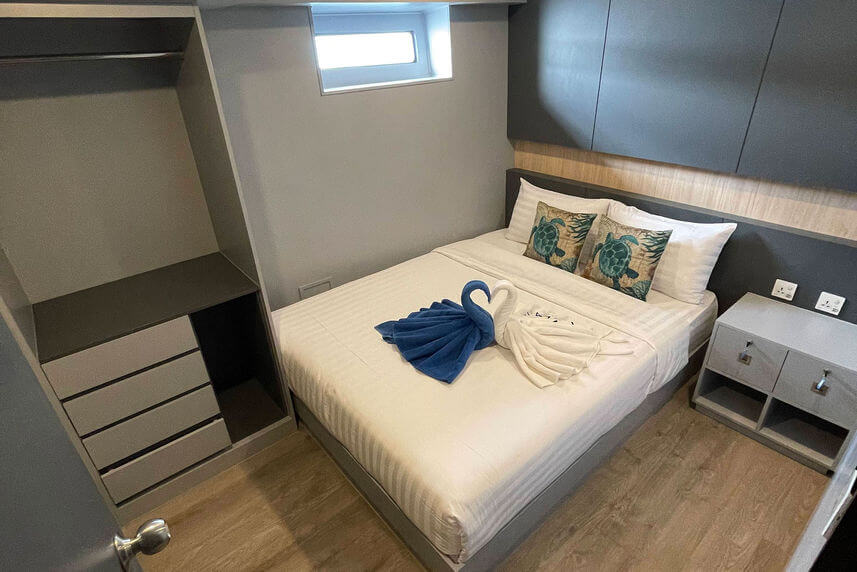
Dive Race Class E has private balcony cabin options as well as a 3D TV and giant inflatables! Operates 4 Night Trips to North Andaman as well as 5 Night Trips to South Andaman (Phuket + Phi Phi).
11) Marco Polo
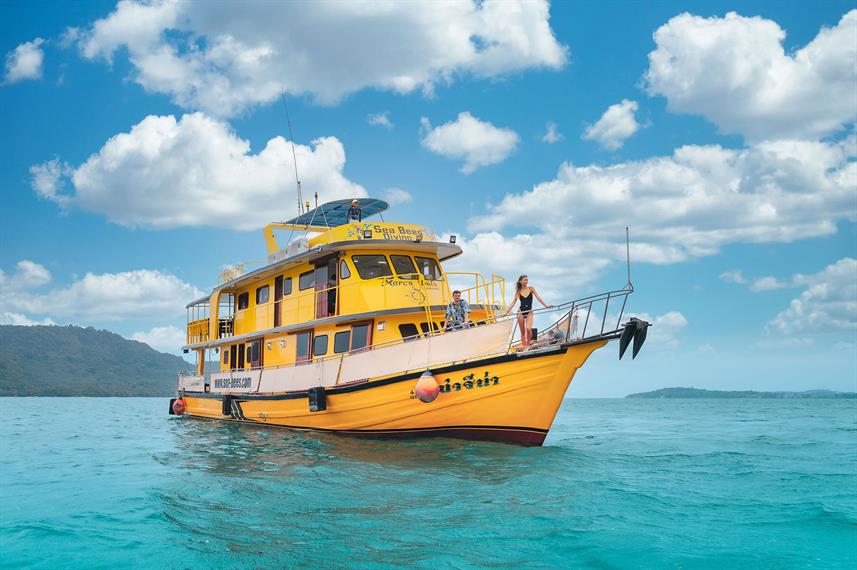
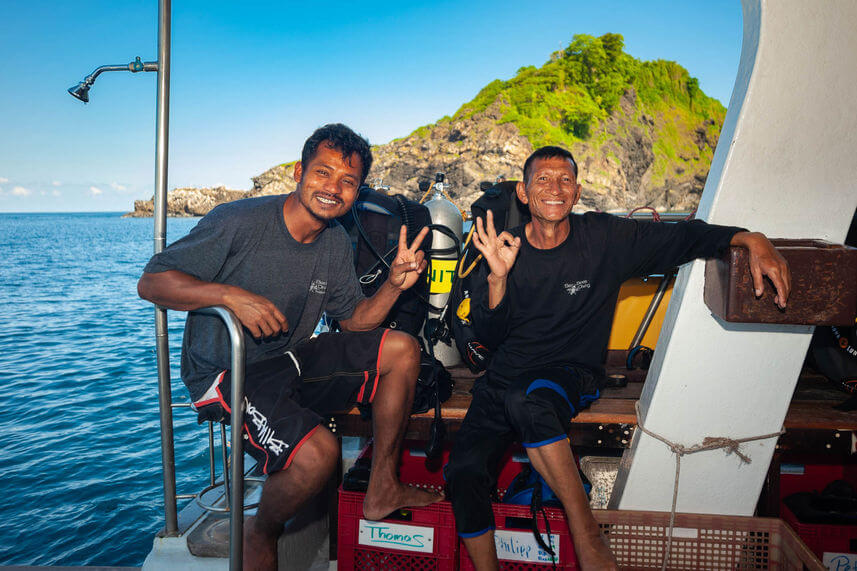
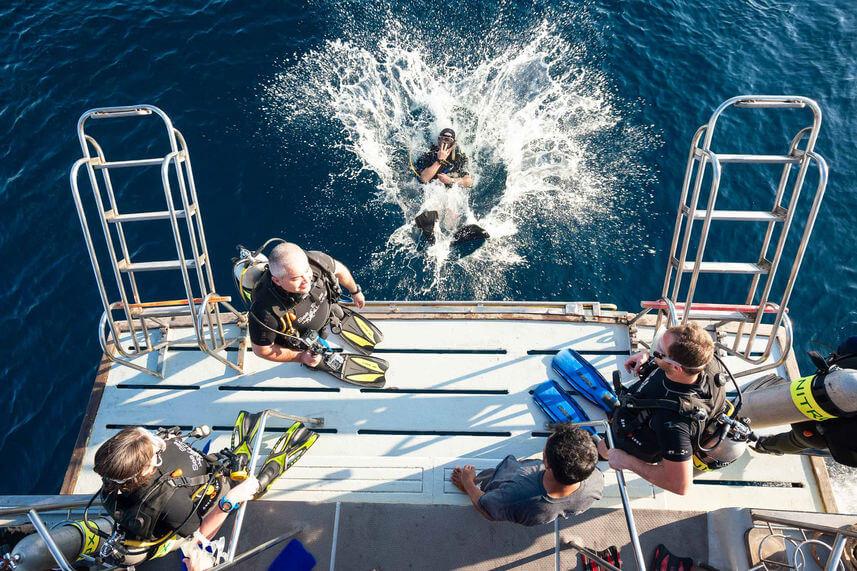
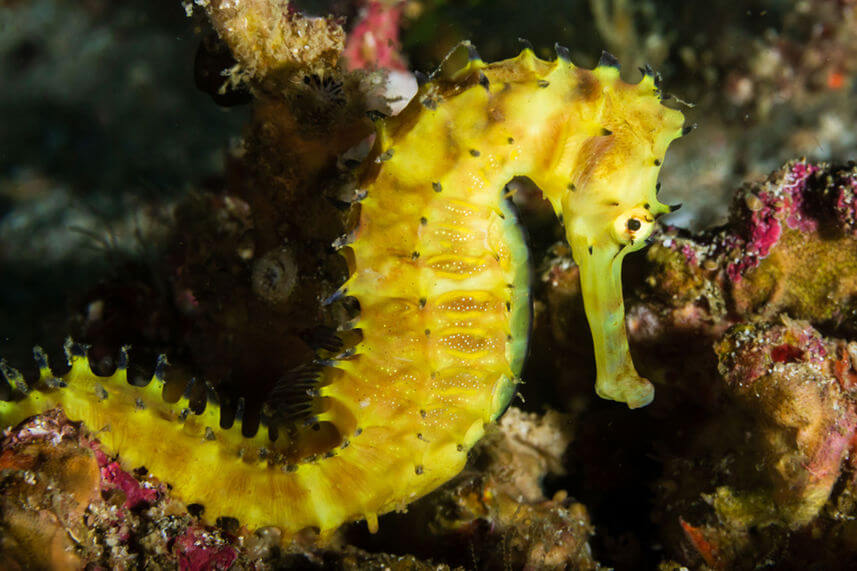
This extremely popular liveaboards caters to just 12 guests in 6 cabins and features a Party Room! There is also FREE NITROX. The BEST option for anyone on a tight time schedule – 2 night trips to North Andaman available!
12) Giamani
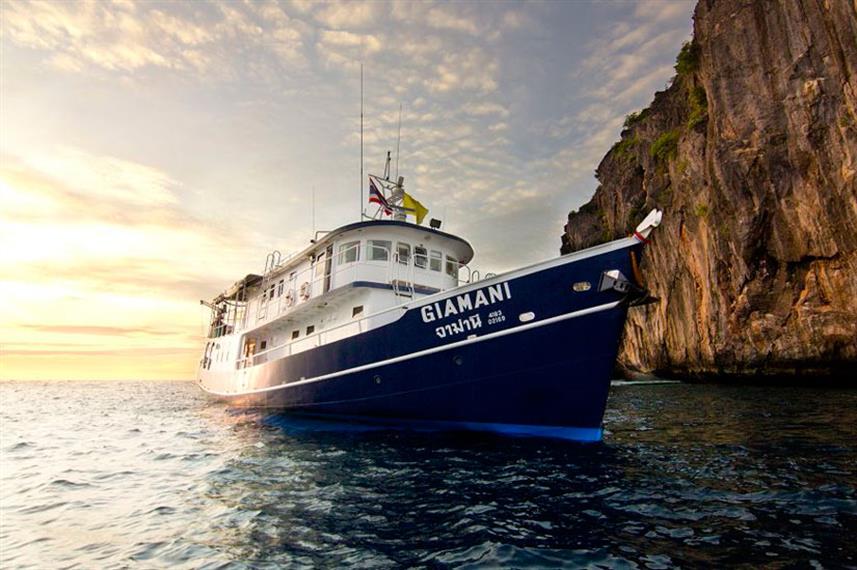
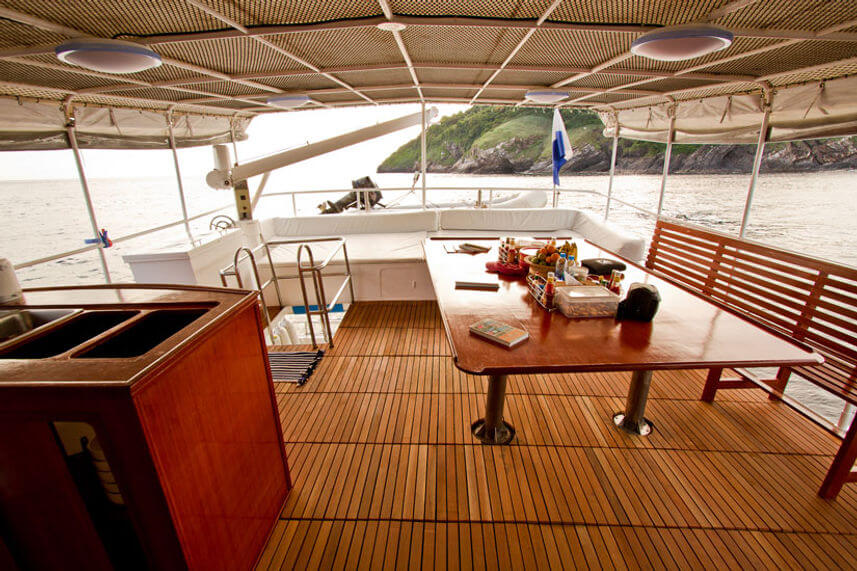
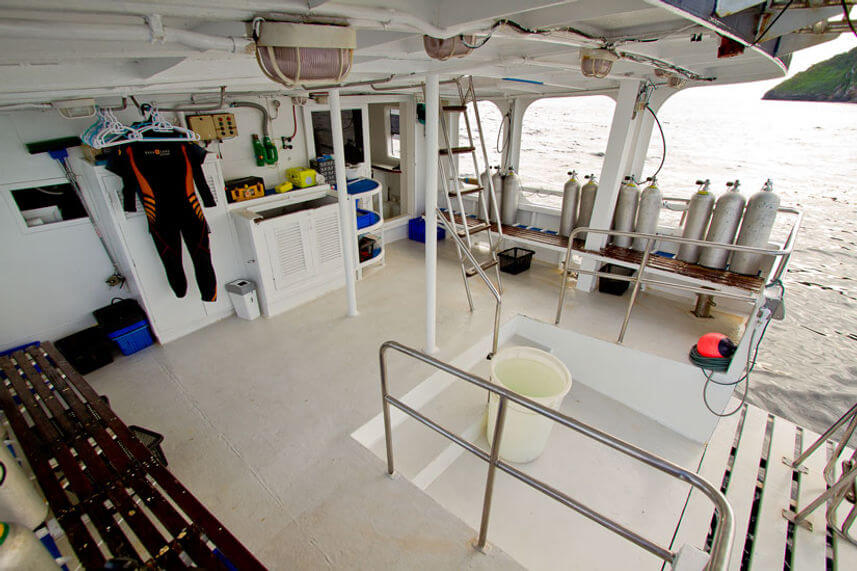
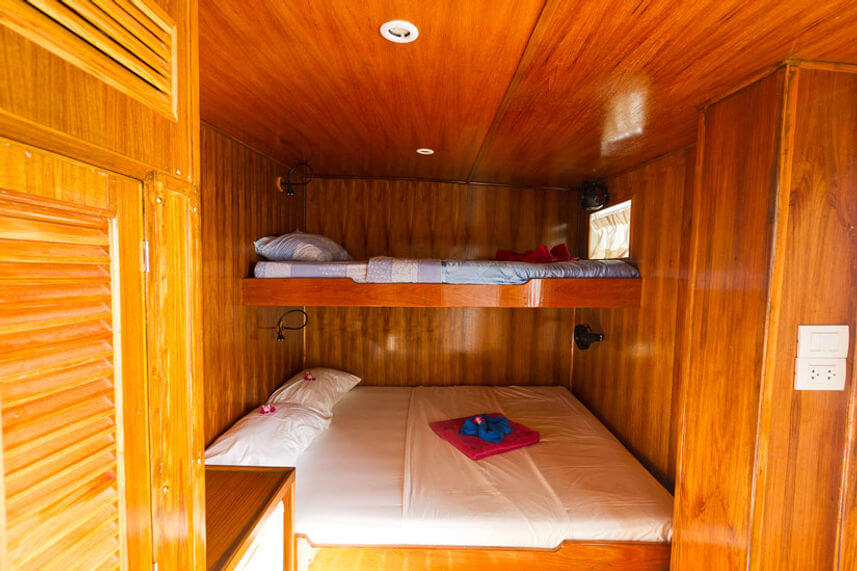
Taking an absolute maximum of 10 guests, Giamani runs the most private dive safari of any Thai liveaboard. With single occupancy cabin options, she’s a great choice for solo travellers. 4 – 7 Night Trips around North Andaman
My Experience on a Thai Liveaboard

In April 2023, after living on Phuket for 4 months and diving much of the South Andaman Sea; I decided to explore the North Andaman Sea once more; for it is within this region that lies that fabled Similan and Surin Islands as well as Richelieu Rock: the very best dive destinations in Thailand!
However; unlike Phuket, the North Andaman Sea can only be accessed via liveaboard! In truth; this is a good thing for divers because it means you’ll often have the dive sites all to yourself…especially if you sign up with a liveaboard that includes off-the-beaten-track dive sites as well as the most famous ones.
Luckily; I knew of just such a liveaboard: the Similan Explorer which surprisingly is also one of the cheapest Thai liveaboards of all time. I say surprisingly because the actual quality of service, food and dive itineraries is extremely high; actually able to rival that of other luxury liveaboards I’d been on.
The only thing that really makes it obvious that Similan Explorer is a budget-friendly liveaboard is the fact that at 25 meters long, it’s a little smaller than pricier liveaboards. However; this is easily remedied by the fact that it takes smaller group sizes.
Renovated in 2024, the Similan Explorer is extremely comfortable and well decked out with ample space, chill out zones and incredible food!
Over 6 days and 5 nights; we dived the legendary Similan Islands, whilst also exploring them by foot during land excursions. The whole experienced we rounded off with a couple of dives at Richelieu Rock; often cited as one of the top 10 dive destinations in the world…and boy was I amazed by it!
To find out more, check out My Review of the Similan Explorer! Or keep reading for some useful tips to know when going on your first Thai Liveaboard.
Tips for going on your first Thai Liveaboard:
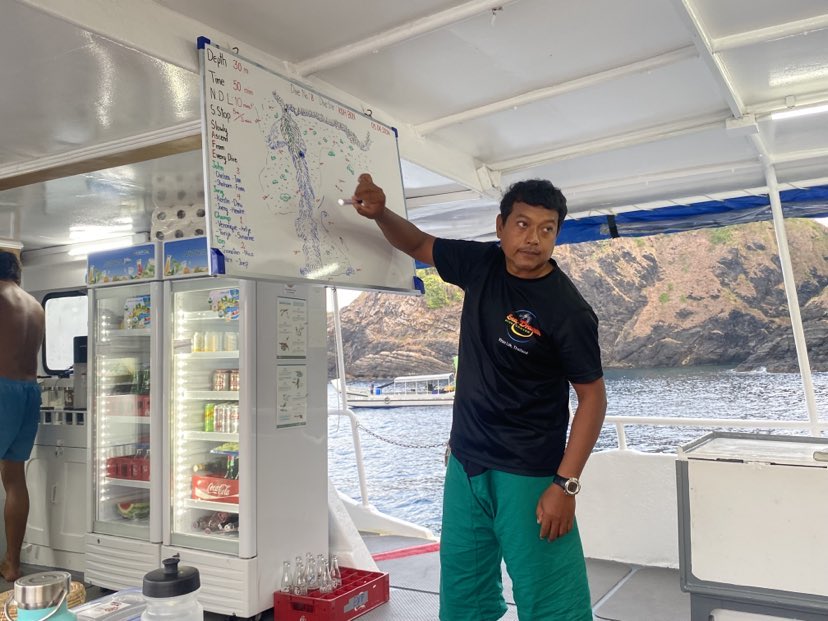
Get Nitrox Certified! Spending a week of scuba diving can take it’s toll on you physically; it’s normal to feel pretty tired afterwards. However; this fatigue can be greatly reduced by diving on Nitrox for the week instead of regular air. Which will also allow you to stay deep for longer!
Rinse yo’ ears! It’s also quite common for people to get aching / sore ears after a week of diving. In my experience the likelihood of this can be reduced by thoroughly rinsing out your ears with freshwater after every dive.
Tip: It’s a good idea to set aside $100 – $150 to give as a tip to the dive guides and boat staff at the end of the trip. Tips are customary and it’s a really good way of showing your appreciation as often the staff on a liveaboard don’t get paid that highly and may go weeks without a day off.
Take a Surface Mark Buoy: And know how to use it! If you get lost or split up from your group; using an SMB menas it’s far easier for boats to see you both as you’re ascending (thus reducing the liklihood of an accident) and when your’e at the surface in order to find you.
Advanced Open Water Certification: Whilst some liveaboards say you only need your Open Water Cert to go on their trips; it’s really a good idea to have your AOW locked down in order to not be excluded on any of the dives such as those exceeding 18 meters.
Dry Bags: Are ideal for cameras, phones, sunscreen and towels. If you do any land excursions be sure to take your dry bag with you.
Insurance: Make sure you have diving insurance! This is crucial. Travel insurance usually doesn’t cover scuba diving. Check out My Guide to Dive Insurance.
Be present! If you take a camera with you, be careful not to witness every dive staring at a tiny display. Put it down and look around with your own two eyes every once in a while.
Go on a North Andaman Sea Liveaboard: In my opinion (and many other divers) the North Andaman Sea (home to the Similan Islands, Surin Islands and Richelieu Rock) is far superior in terms of diving compared to the South.
The dive sites are quieter, the coral healthier, the chance of seeing something big like a whale shark great. Opt for a North Route every time!
Thai Liveaboards – QUICK COMPARE
| Check on LiveAboard.com | Liveaboard: | Routes: | Price: | Trip Length (Nights) | |
|---|---|---|---|---|---|
| Click Here | Similan Explorer | 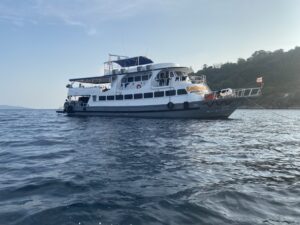 | North / South | $ | 3 – 13 |
| Click Here | Manta Queen 3 | 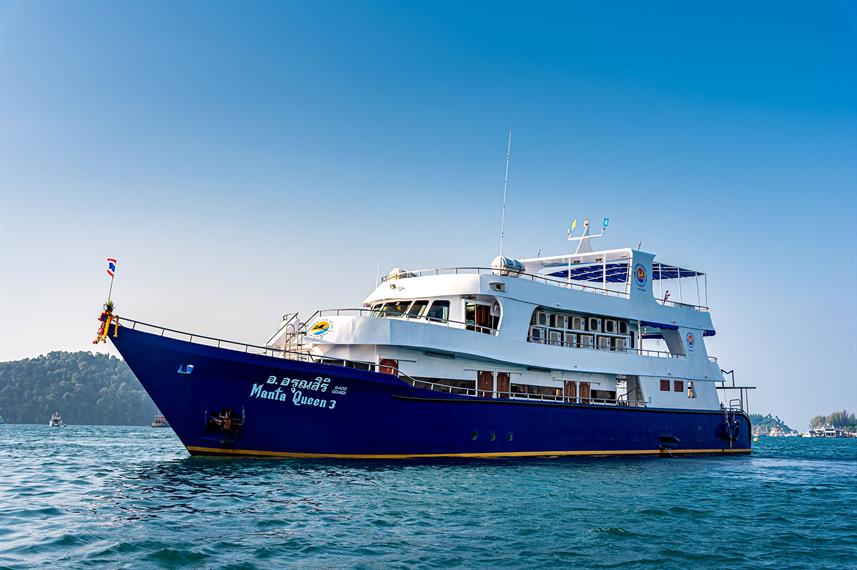 | North | $ | 5 |
| Click Here | Pawara |  | North | $ | 4 |
| Click Here | The Junk |  | North / South | $$ | 3 – 6 |
| Click Here | Smiling Seahorse | 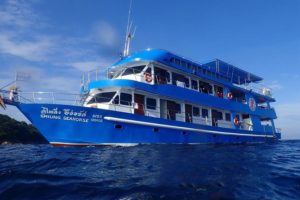 | North / South | $$ | 6 – 8 |
| Click Here | Sawasdee Fasai |  | North | $$ | 4 |
| Click Here | Bavaria |  | North | $$ | 3 – 6 |
| Click Here | Deep Andaman Queen | 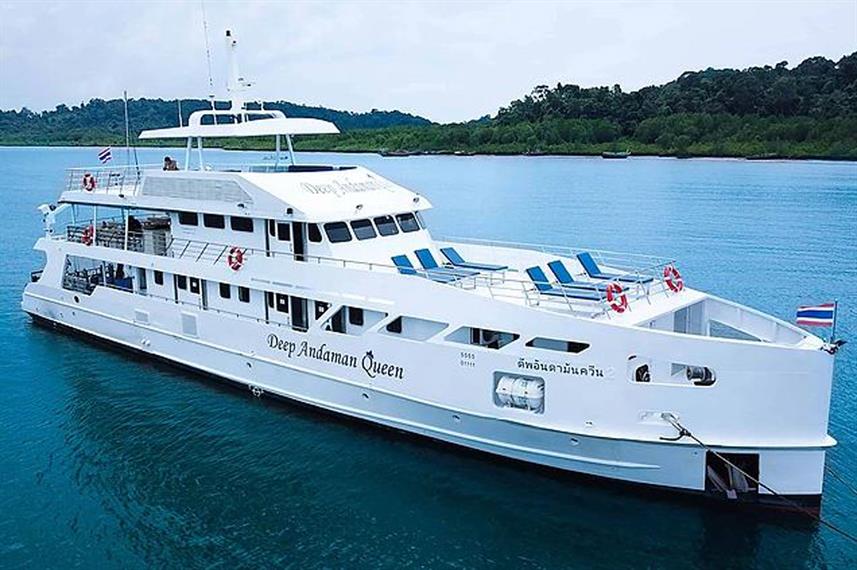 | North / South | $$$ | 4 – 9 |
| Click Here | Phinisi |  | North / South | $$$ | 4 – 10 |
| Click Here | Dive Race Class E | 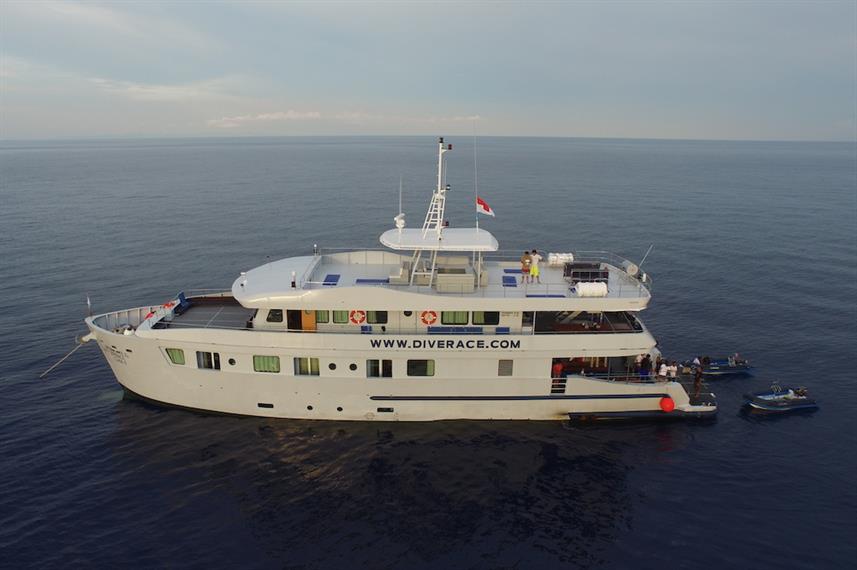 | North / South | $$$ | 4 – 5 |
| Click Here | Marco Polo | 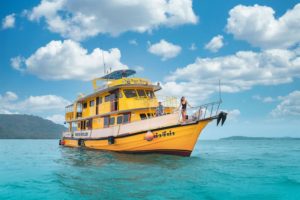 | North | $$$ | 2 – 4 |
| Click Here | Giamani |  | North / South | $$$ | 4 – 7 |
Routes / Itineraries by Thai Liveaboards
North Andaman
This is by far the most frequently taken route by Thai liveaboards – it’s also the best diving in Thailand! It is within the North Andaman that one will discover the legendary Similan and Surin islands as well as Richelieu Rock.
On the Similan and Surin Islands lie evergreen forests, white beaches and mighty boulder formations, whereas below water you’ll discover the country’s most pristine hard coral, with many stunning reef gardens, walls and swim throughs that are home to a rich and teaming marine ecosystem.
Richelieu Rock is widely considered to be among the top ten dive sites in the world and as one of the most likely places in Southeast Asia for spotting a whale shark (between Jan – Feb).
Don’t think that just because most Thai liveaboards take the north route it’s going to be the most crowded!
Admittedly, you will probably see some other liveaboards operating in the area, but that’s all you’ll see as there are no dive resorts. These regions can only be dived via liveabaord, making them more off the beaten track than other Thai dive destinations.
If your number one priority is discovering the absolute best marine biodiversity that Thailand has to offer, whilst escaping the crowds, I strongly recommend a North Route.
South Andaman:
A few liveaboards offer routes through Thailand’s South Andaman Sea, around the Krabi Province to areas including Phuket, Koh Phi Phi, Koh Haa and Koh Rok.
Although less liveabaords venture to these islands, there are dive resorts and accommodation around here, so the waters can actually get more crowded than North Route voyages.
However, the South Route is probably the most scenic above water, especially when passing through the Koh Phi Phi islands, which with their towering limestone cliffs and assorted coves and bays have been voted the most beautiful island group in the world.
Below water, expect lots of soft coral wall dives as well as some excellent macro life. Leopard sharks, turtles and black tip reef sharks are all regularly seen.
Koh Phi Phi is also home to the famous King Cruiser wreck, an ex-cary ferry that now lies 32 meters deep and is perhaps the most popular wreck dive in southern Thailand. The South Route can be dived all year.
Diving Season of Thailand:
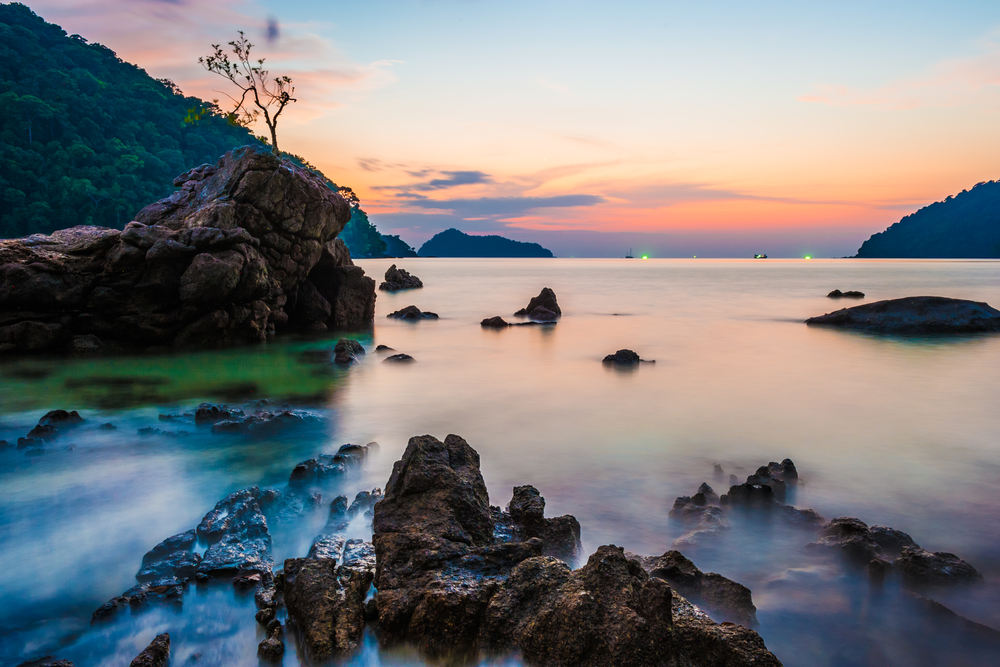
Thai liveaboards all explore the Andaman Sea, which is located off the country’s western coast. There’s a distinct diving season here (Oct – May), outside of which the North Route destinations: the Similan and Surin Islands are closed to all vessels. As for the Southern Route islands, these can be dived all year round, but they’re still subject to the changing conditions of the season. Here’s an overview of Thailand’s Andaman Sea Dive Season:
- January – February: During these months, the Andaman Sea enjoys calm waters, with exceptional visibility both up North around the Similan and Surin Islands as well down as in the South Islands. This is also tourist high season, so book early to avoid disappointment.
- March – April: These two months are great to dive in the Andaman Sea, with clear and calm waters. That said, water visibility isn’t quite as clear. That’s because of the large plankton blooms that occur over these months. But these plankton clouds attract whale sharks and manta rays!
- May – October: The Similan Islands and Surin Islands are closed due to the exceptionally choppy water conditions bought on by monsoon season. However, the South Route islands can still be dived during this time. Water conditions are more choppy and less clear though.
- October (mid) – December: From the middle of October onwards, liveaboards in the Similan Islands and Surin Islands are back open for business, with incredible water visibility and stillness. October is considered to be one of the best months of the year to dive, due to it being tourist low season. From November onwards, it’s back to tourist high season.
Dive Insurance:
It’s important to get diving insurance before your trip! This is to cover any medical expenses, loss of equipment and flight / accommodation expenses following injury.
Don’t leave this until the last minute! You actually need to have your scuba diving insurance sorted properly before leaving your home country, in order to get full coverage.
Find out more by heading to our Dive Insurance Reviews Page.
Thai Liveaboard Dive Sites
Similan Islands
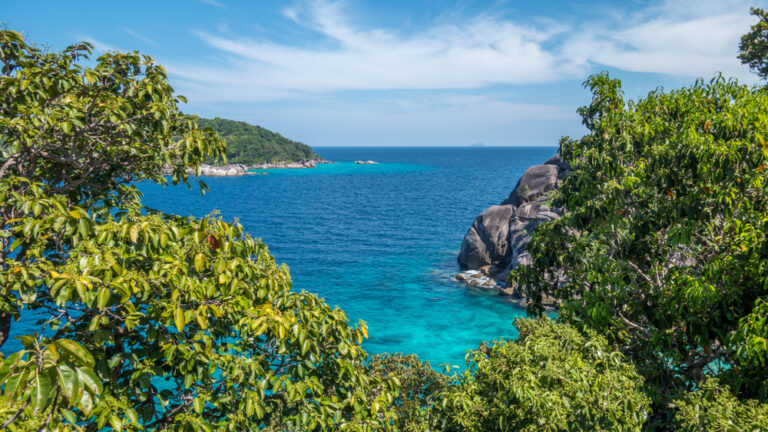
Fifty two miles north west of Phuket, lies the fabled Koh Similan Marine National park – an archipelago of eleven granite boulder islands arranged in a South to North access. In order from South to North, they are:
Koh Huyong (Island 1, at the southernmost tip of the mini Archipelago)
Koh Payang (Island 2)
Koh Payan (Island 3)
Koh Miang (Island 4)
Koh Ha (Island 5)
Koh Payu (Island 6)
Koh Hin Pousar (Island 7)
Koh Similan (Island 8)
Koh Bangu (Island 9)
Koh Bon (Island 10)
Koh Tachai (Island 11, at the Archipelagos northern end)
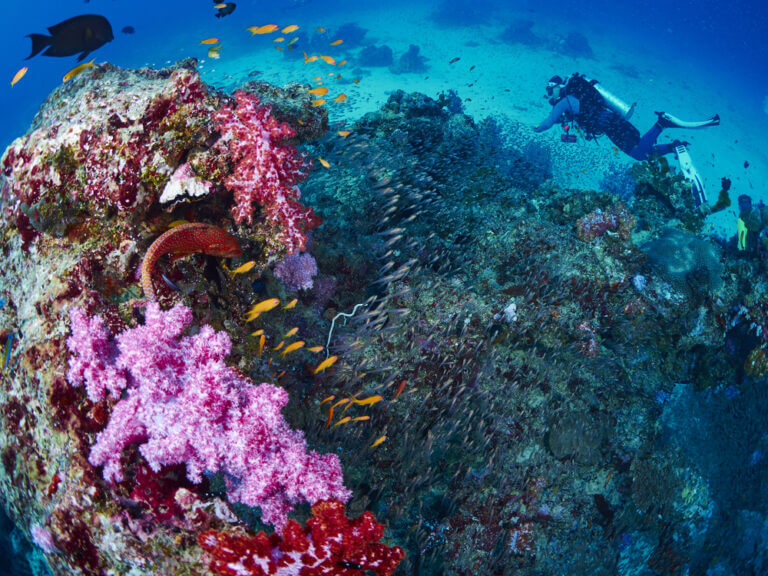
Above the vibrant blue water, the views are breathtaking. Lush neon green rainforests adorn the islands, the dense vegetation jostling for space to reach the fiery orange sun beating down upon it.
Swooping and swinging, skittering and scuttling, crawling and flying through this noisy tumble of jungle are crab eating monkeys, dusk langurs, squirrels, lizards, bats and a colourful assortment of tropical birds.
Around the edges of the island, the vibrant jungle reluctantly fizzles out to give way to immense boulders littering the fine sand beaches that are almost as white as snow.
But it is what lies beneath the crystal clear waters surrounding these islands, that has given the Similans their formidable reputation as one of the top scuba diving destinations in the entire world.
The eastern Similan dive sites showcase rainbow assorted coral reefs, with psychedelic coloured sea anemones lazily waving their tentacles in the air as countless reef fish dart above them. Waters are calm and beginner friendly.
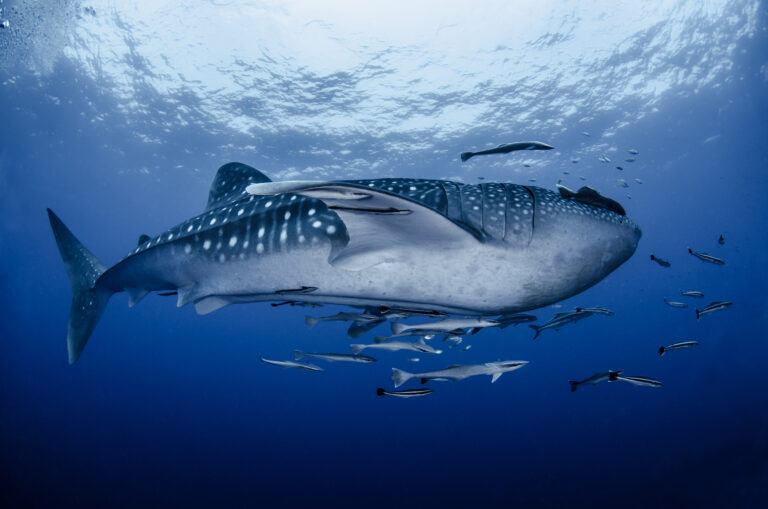
Meanwhile, along the western dive sites are mighty granite boulders which descend all the way down to 40 meters, featuring swim throughs, caves and tunnels for the boldest and most intrepid of divers.
Strong, drift dive offering currents, provide bountiful nutrients for immense living walls and carpets of crescent coloured soft corals and sea fans which coat every feasible surface.
Mighty whale sharks and graceful manta rays frequently visit these waters between february and april, hoovering up the living clouds of plankton that accumulate here around this time.
Massive barracuda, jackfish, batfish and snapper shoot after the smaller reef fish, whilst camouflaged scorpionfish, stonefish and octopus blend in seamlessly with their environment.
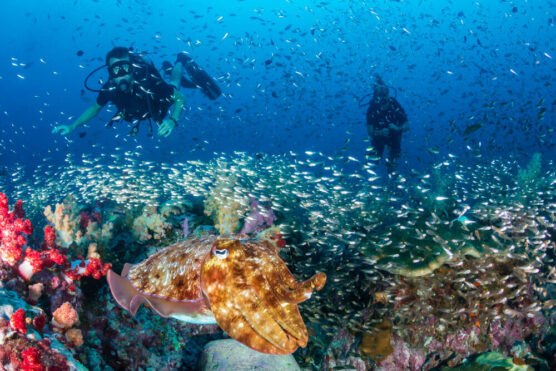
Alien like cuttlefish scoot to and fro’, as lethal lionfish drift ominously drift through the water and nosy moray eels poke their head from hiding places.
Peek carefully, among the coral and crevices, the reefs and rocks, the cracks and gaps, and delicate seahorses, dainty pipefish, skittish shrimp, surreal nudibranch and all manner of other weird and wonderful micro critters await your discovery.
It is impossible to do any real level of justice for the true beauty that awaits divers in the Similan through words or even pictures. To fully realize the splendor that awaits you there, you will simply have to go.
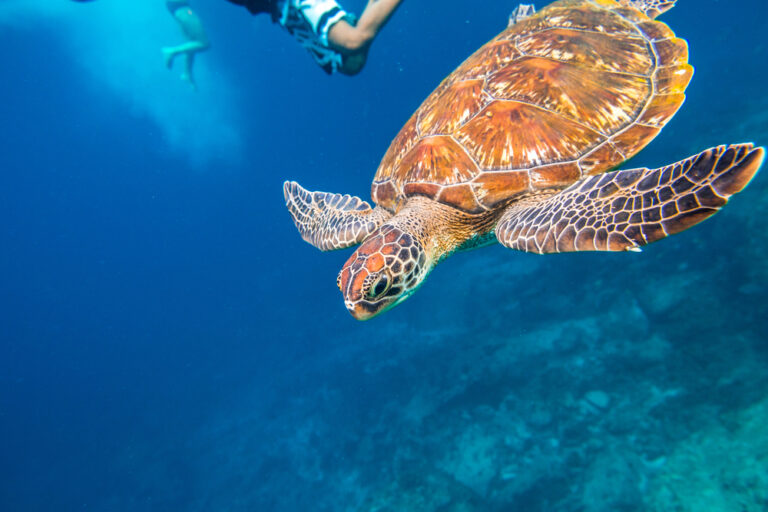
Surin Islands
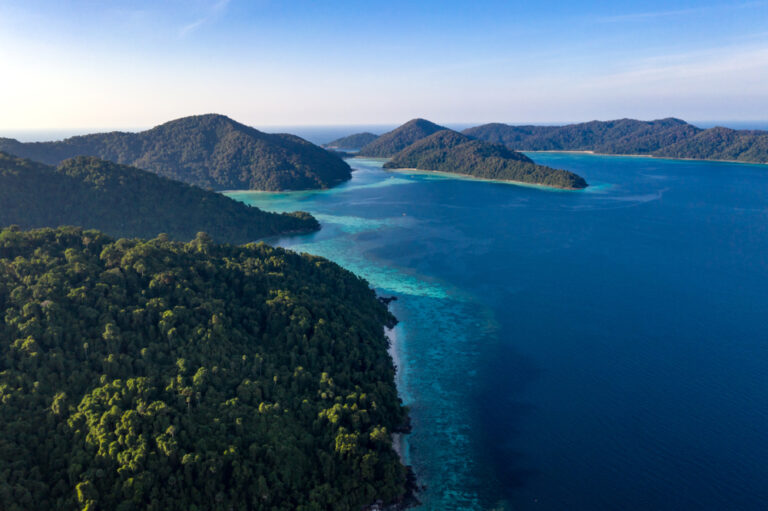
100 KM further north of the Similans, is the even less frequented, but no less spectacular Surin Islands.
The 2 main main islands forming the bulk of this 320 KM mini archipelago are:
- Koh Surin Nuea
- Koh Surin Tai.
…In addition to 3 smaller, satellite islands that enhance the overground visas and provide additional fringing reef:
- Koh Ri
- Koh Khai
- Koh Klang
This National Park status also extends to Richelieu Rock, a huge seamount in the middle of the sea 10 km southwest of Koh Surin, which is renowned as one of the top ten greatest dive locations in the world, as well as one of the most likely places to see a Whale Shark.
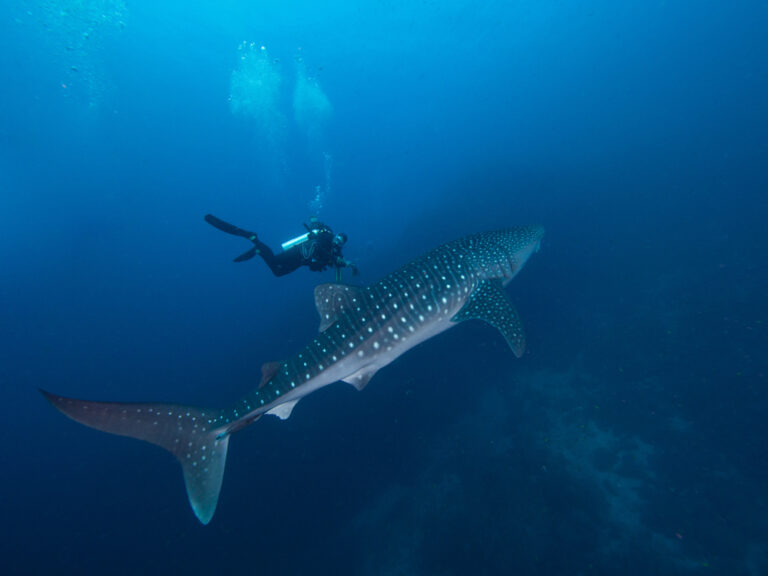
Because the Surin Islands are visited even less frequently than the Similan Islands, divers will enjoy having these crystal clear waters all to themselves.
It is like stepping back in time, to an era where life beneath the waves was still unaffected by the hand of man. The coral reef here is in spectacular condition and home to a wide assortment of reef fish and other marine life.
Whale sharks and manta rays can be seen around the Surin Islands, as well as turtles and sometimes even bryde’s whales.
Dive conditions range from beginner to advanced, with everything from shallow to deep diving, calm waters to drift current dives and cave to open water diving being available.
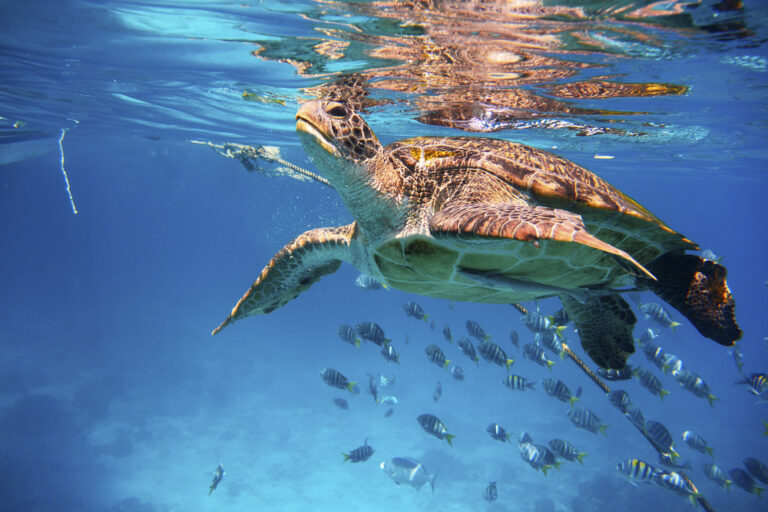
Phuket & Phi Phi Area
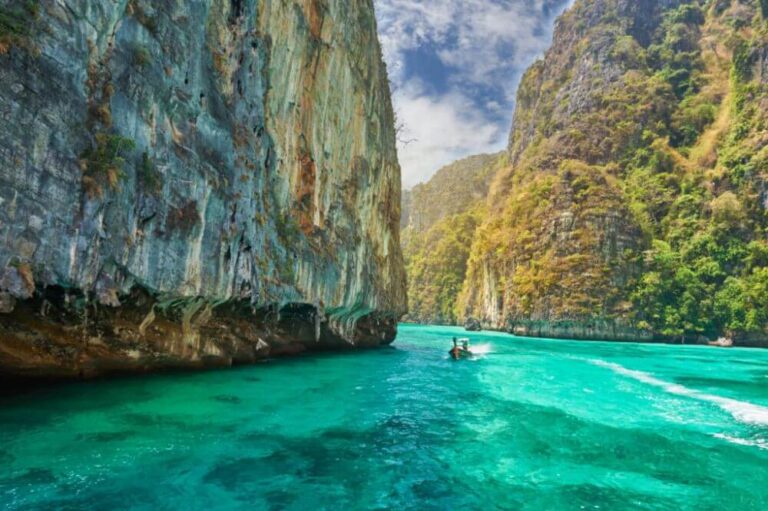
Phi Phi Islands: 45 KM East of Phuket, in the Krabi Province, is the stunning 6 island archipelago of Koh Phi Phi. They have been voted the most beautiful island group in the world.
The two largest islands, Koh Phi Phi Don and Koh phi phi Leh, make up the bulk of landmass, with the former being an ancient settlement that is a melting pot of Thai, Chinese, Moken – and now backpackers!
Towering limestone cliffs climb into the sky from these two islands, where the dense canopy of jungle atop them stretches further towards the heavens still. Beaches, coves and bays are scattered across them, to make for a diverse assortment of dramatic landscape.
The four smallest islands, Koh Mai Phai, Ko Yung, Bida nok and Bida Nai are little more than limestone rocks jutting from the sea although the diving to be had around them is just as stunning.
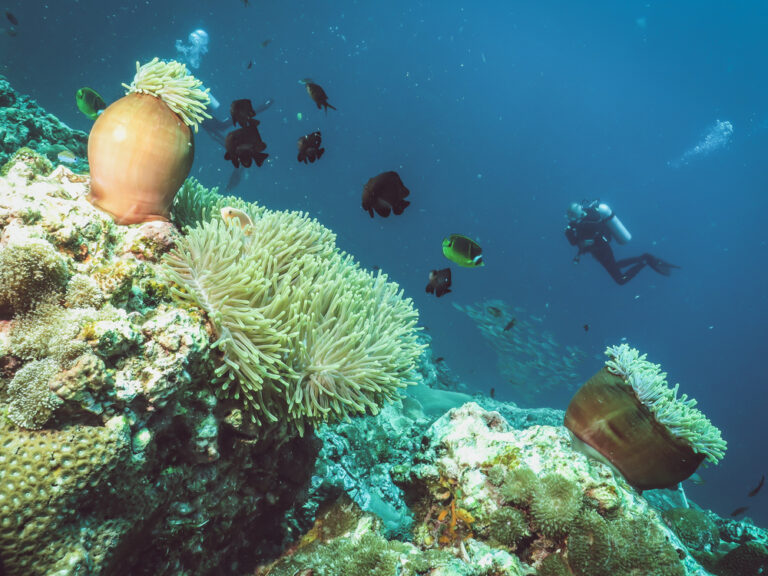
There are many incredible dive sites around the Phi Phi Island group, consisting largely of incredible coral and gorgonian fan adorned wall dives, where the limestone drops to a depth between 10m – 25m, and feature various caves and swim throughs for thrill seekers.
That said, most local dives around here are suitable for beginner level divers, whereas some of the further flung dives featuring currents and deeper waters, better suited for experienced dives in search of action.
Expect a phenomenal range of marine life including Wrasse, moorish idols, rays, turtles, travallies and angelfish.
Keep an eye out for leopard sharks cruising along the bottom and blacktip sharks patrolling over the reefs.
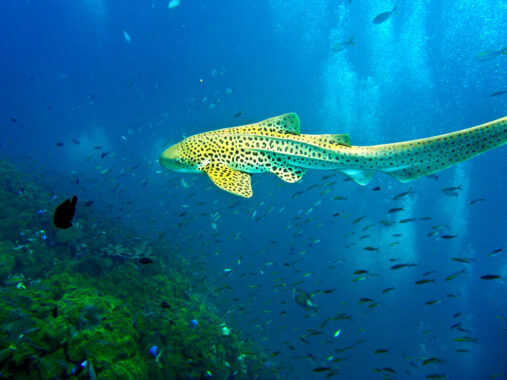
King Cruiser – Once an ex-car ferry that travelled between Phi Phi and Phuket, in 1997 the “King Cruiser” cruised straight into an anemone reef and sank a short distance away. Happily, nobody died and divers were left with an awesome wreck!
Now mostly broken up, the King Cruiser is coated with beautiful soft corals and is inhabited by large schools of Barracuda and Snapper, as well as Groupers, Eels and Crabs.
With strong currents and reaching down to 32m deep, this is a great dive site for advanced divers or those looking to rack up the experience as part of their PADI Advanced Open Water Course.
With stunning views both from outside and the cavernous inside, the King Cruiser is regarded as the best wreck dive around Phuket.
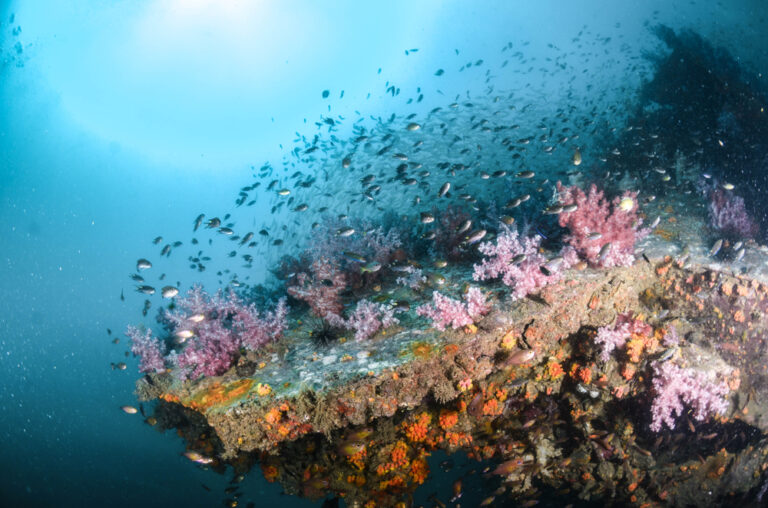
Shark Point – Named after the large numbers of peaceful leopard sharks that are regularly seen here, Shark Point is a series of 7 pinnacles running north to south, that lie halfway between Phuket and Phi Phi.
Covered in red, pink and purple soft corals, large sea fans and all colours of sea anemones, they are home to a variety of reef fishes as well as seahorses, barracuda and occasionally other shark species such as black tips. It is a favourite drift dive for experienced divers!
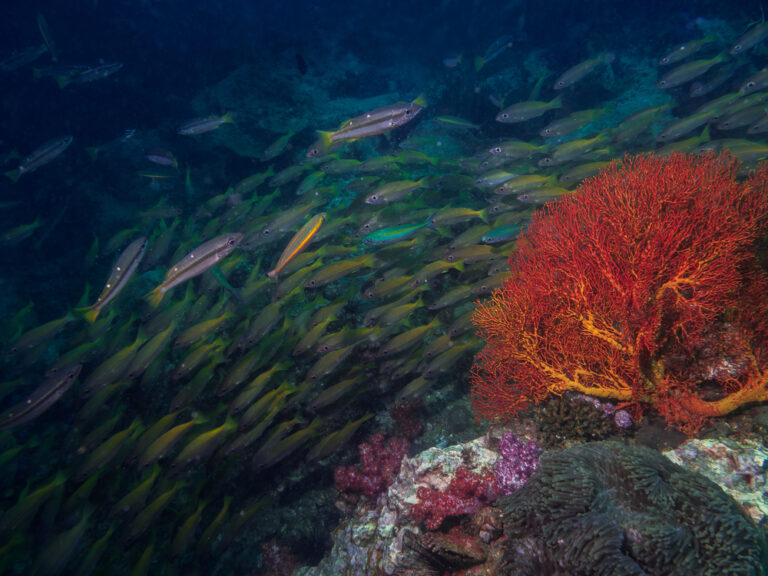
Koh Doc Mai – Also known as “Flower Island” this is a small piece of jungle topped sheer rock located between shark point and Phuket. Although tiny, it regularly provides divers with huge memories due to the incredible wall diving and macro species encountered here.
Those who regularly dive this favourite site report encountering something different every time, from seahorses, frogfish, nudibranchs and ornate ghost pipefish and even to tiny, cute bamboo sharks.
For the intrepid there are also some thrill seeking opportunities here including a spacious cavern and an air pocket in one of the caves to make for a mind blowing surfacing experience at 13m.
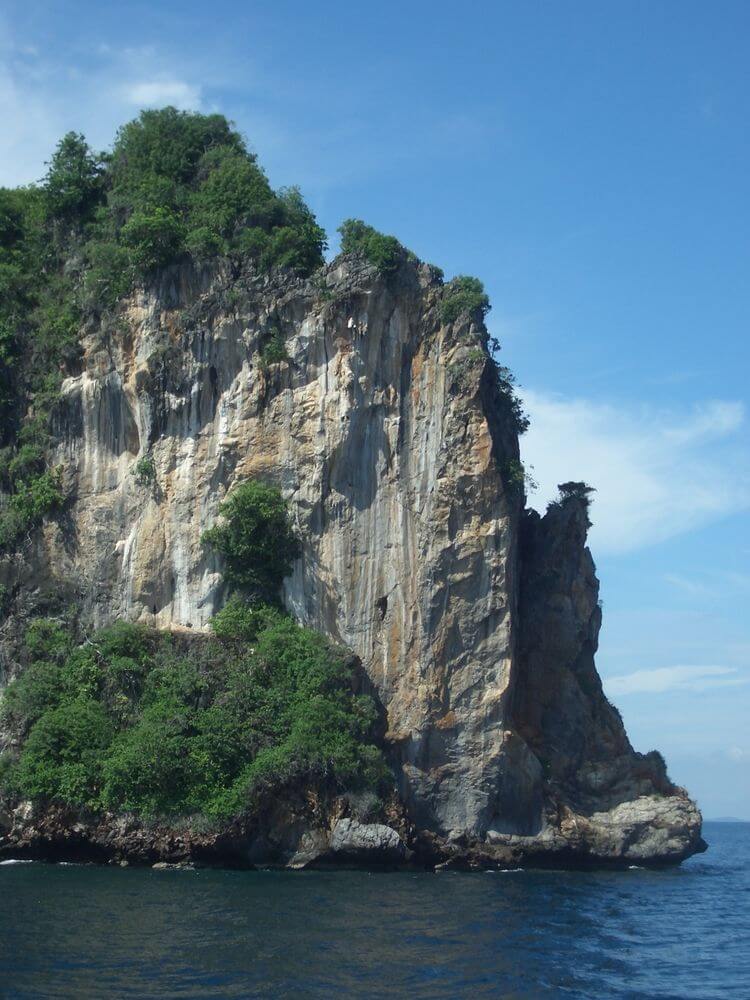
5 Incredible animals to look out for:
1) Whale Sharks
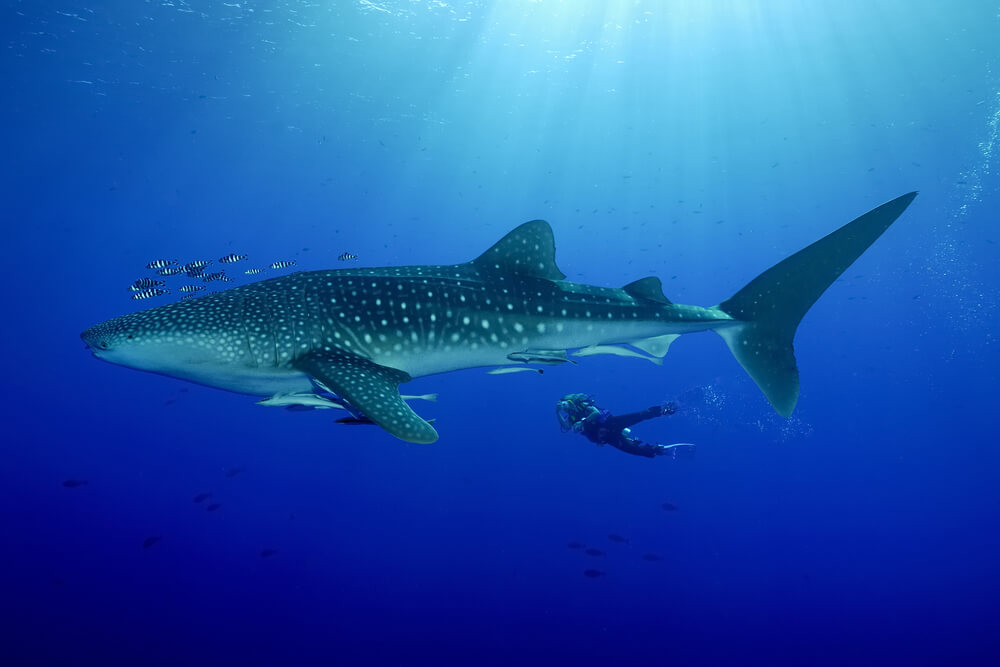
- Whale Sharks are the largest known extant species of fish in the world! The biggest recorded individual measured a whopping 18.8m long.
- They are slow moving, filter feeders. Their diet includes copepods, krill, fish eggs, crab larvae and very small fish and squid.
- They’re friendly to divers and frequently allow people to swim up close. Avoid touching them though!
- The best months to see Whale Sharks in Thailand’s Andaman Sea are March and April.
2) Manta Rays
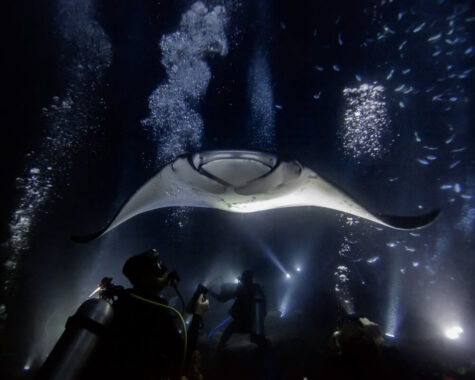
- Manta Rays are another gigantic pelagic encountered in Thailand, with the largest species Manta Birostris, reaching 7m in width!
- In addition to being filter feeders, recent findings show that Manta Rays actively hunt mesopelagic fish and other organisms 650 – 3,300 feet below the surface.
- Gestation lasts a year with Mantas giving birth to live pups.
- March and April are also the best time to see manta rays in the Andaman Sea, due to the thick plankton clouds that accumulate there during these months.
3) Turtles
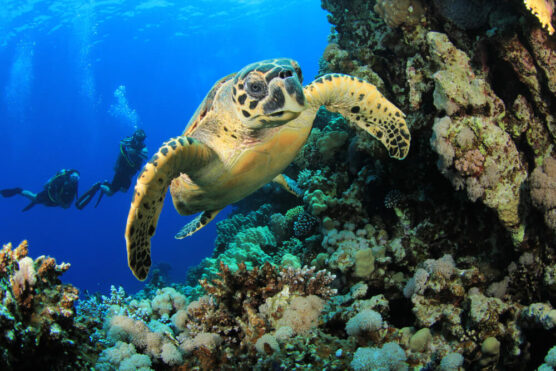
- Thailand’s Seas are home to Leatherback Turtles, Olive Ridley Turtles as well as rarer Green Sea Turtles and the critically endangered Hawksbill Sea Turtles.
- Most species of turtle feed primarily on small animals like jellyfish, squid and crustaceans as well as vegetation such as sea grasses and algae.
- When they reach adulthood, Green Sea Turtles are the only species of Sea Turtle to be fully vegetarian in diet, which is reflected by their finely serrated jaws.
- To breed, Sea Turtles return to the same beaches where they hatched. Around the Similan and Surin Islands, nesting season occurs from october – march.
4) Cuttlefish
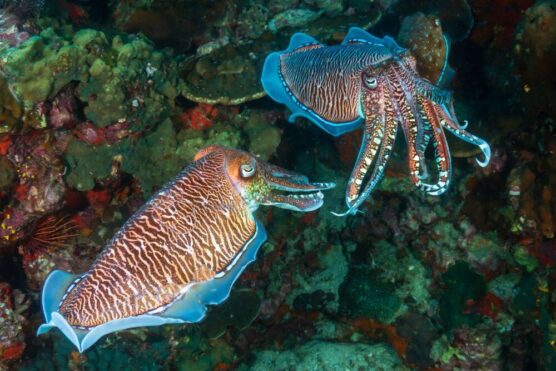
- Cuttlefish are able to rapidly change the colour of their skin to produce moving patterns of colour across their bodies.
- This amazing ability serves multiple functions; confusing predators, hypnotising prey, camouflage, communication and elaborate mating rituals.
- Smaller males can pretend to be females, tricking large males to mate with them & take them back to their lairs. When the bigger males aren’t looking, the small males mate with the real females!
- There’s over 120 different species of cuttlefish, ranging in size from 4.5cm to over half a metre long!
5) Leopard Sharks
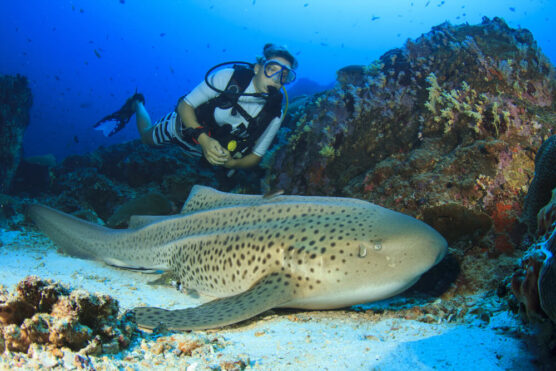
- Unlike other sharks, which must constantly swim to avoid drowning, leopard sharks can conserve energy by resting at the bottom of the sea floor.
- That’s because they have specially adapted spiracles behind their eyes, which blow a steady stream of water over their gills.
- Sharks like this belong to the Carpet Shark Order. Another type of Carpet Shark is the Whale Shark.
From birth, leopard sharks form large schools, generally segregated by age and sex. These schools are nomadic and have a strict social hierarchy.
Diving Squad Debriefing
Nice work! You have made it to the end of this whale shark of an article telling you everything you need to know about the very best Thai liveaboards.
We constantly review and update our articles so you can rest assured that what you’ve read today reflects the very latest information on Thai liveaboards.
We truly hope you’ve found this article useful and don’t forget, if you have any questions shoot an email over to ajhatton55@gmail.com and we’ll assign a dolphin member of our team to you in no time at all.
Support the Squad!
Some of the links in our content are affiliate links. This means that if you buy a product, book a liveaboard, book accommodation or purchase insurance, we earn a small commission at no extra cost to you. Thanks!
